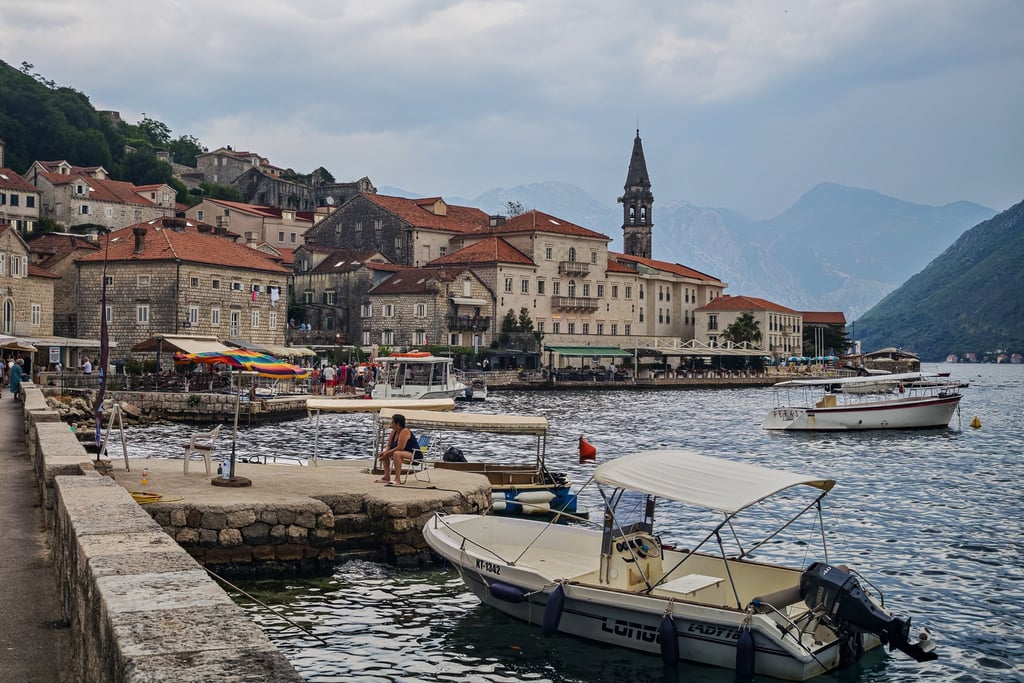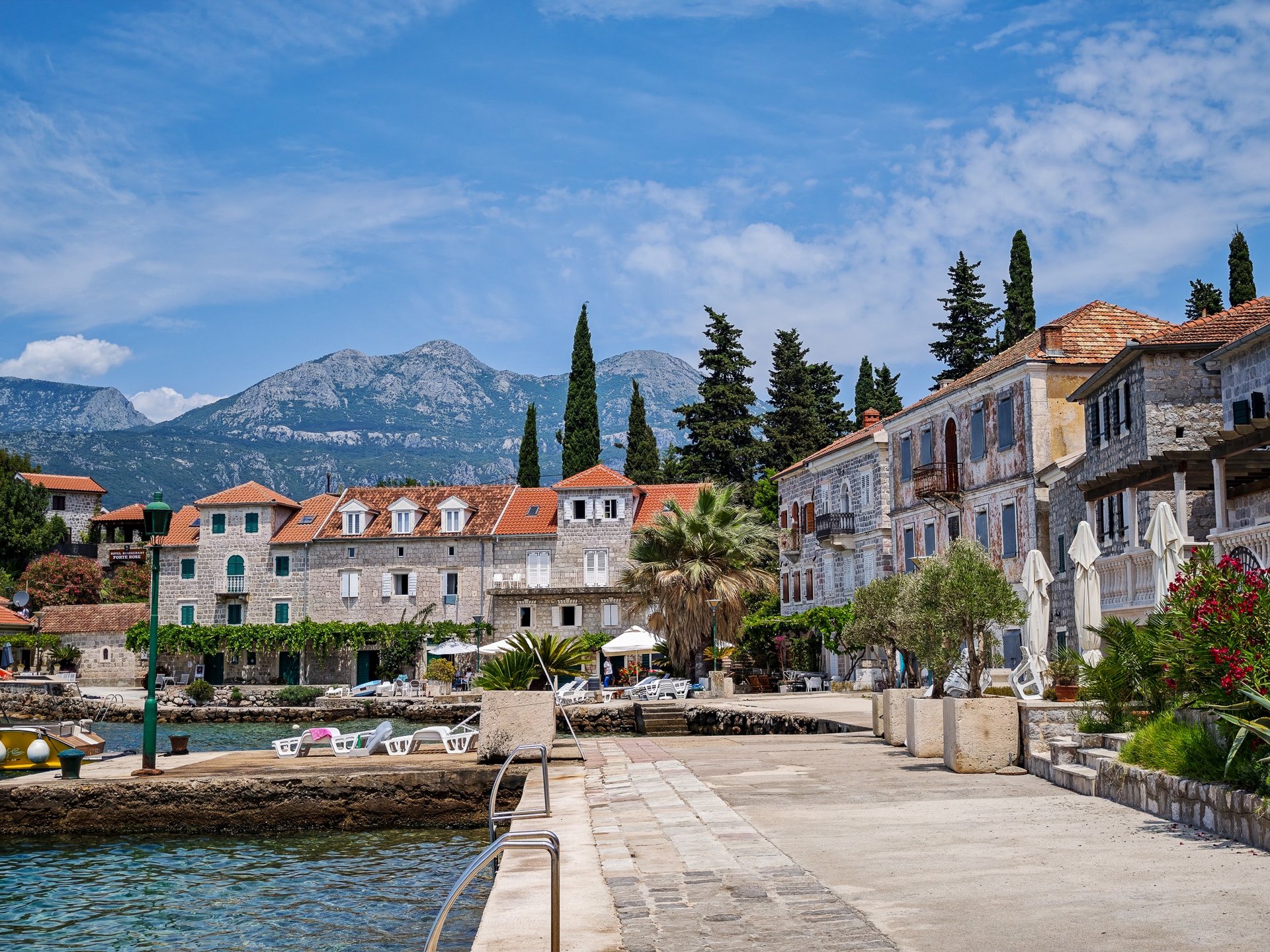
MONTENEGRO
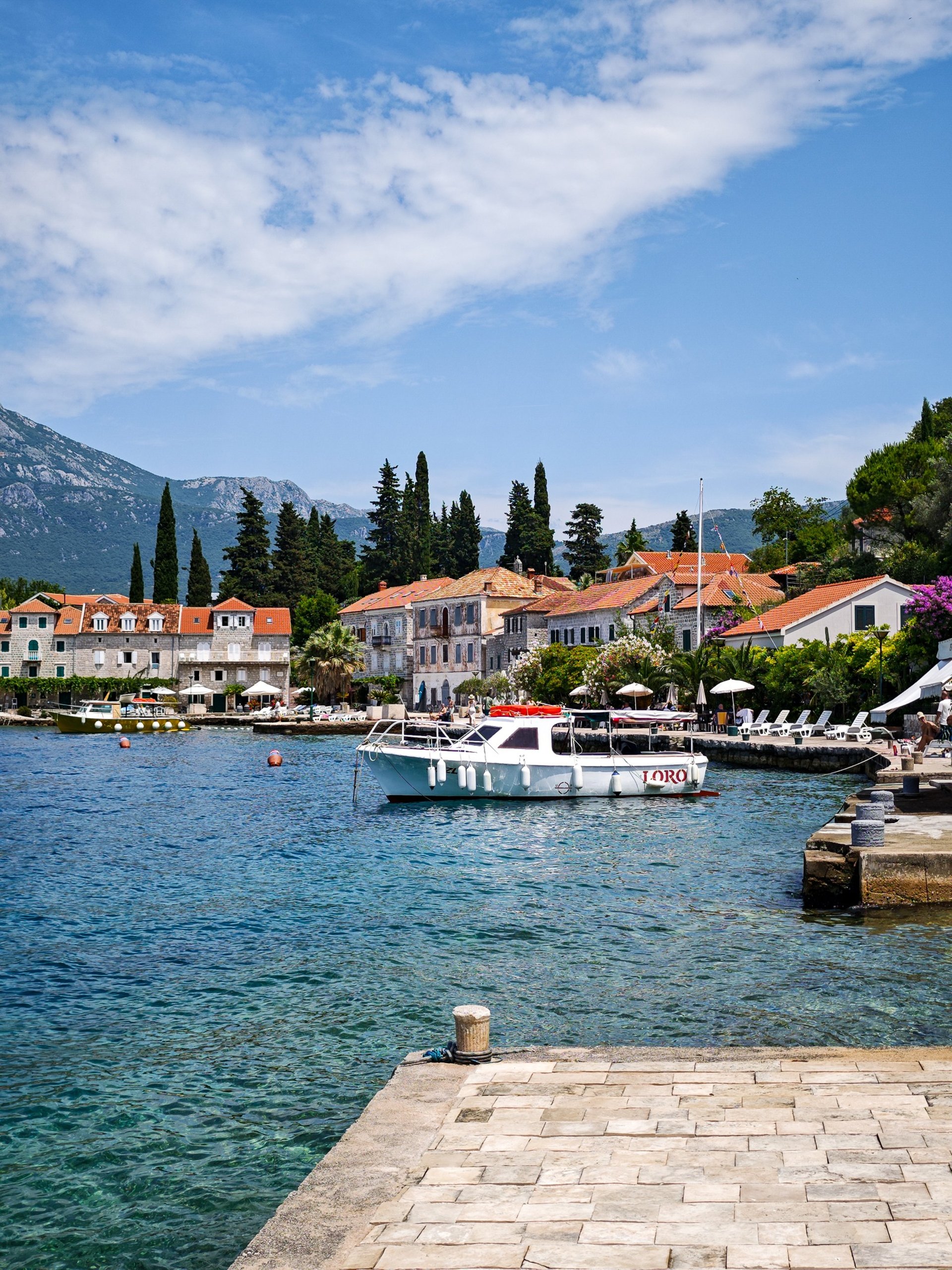
MONTENEGRO
Montenegro itinerary & things to do
Montenegro: the gem on the edge of Europe and the Balkans
Located between much more well-known tourist destinations such as Croatia and Albania, the country of Montenegro is often overlooked. However, for an authentic and intriguing mixture of European and Balkan landscapes and culture, Montenegro should surely be on every traveller’s radar.
Its size is definitely one of its biggest plus points, as it is truly gem-packed with the most amazing nature parks, stunning lakes and bays, and interesting cultural sites. Within just an hour's drive, you can unlock a completely different part of the country, which makes it very suitable for both the completionists among us and those who are short on time but crave variety without full days of being on the road.
Let us take you on an amazing 2 to 3-week journey through this still rather hidden gem of a country, on the edge of Europe and the Balkans!
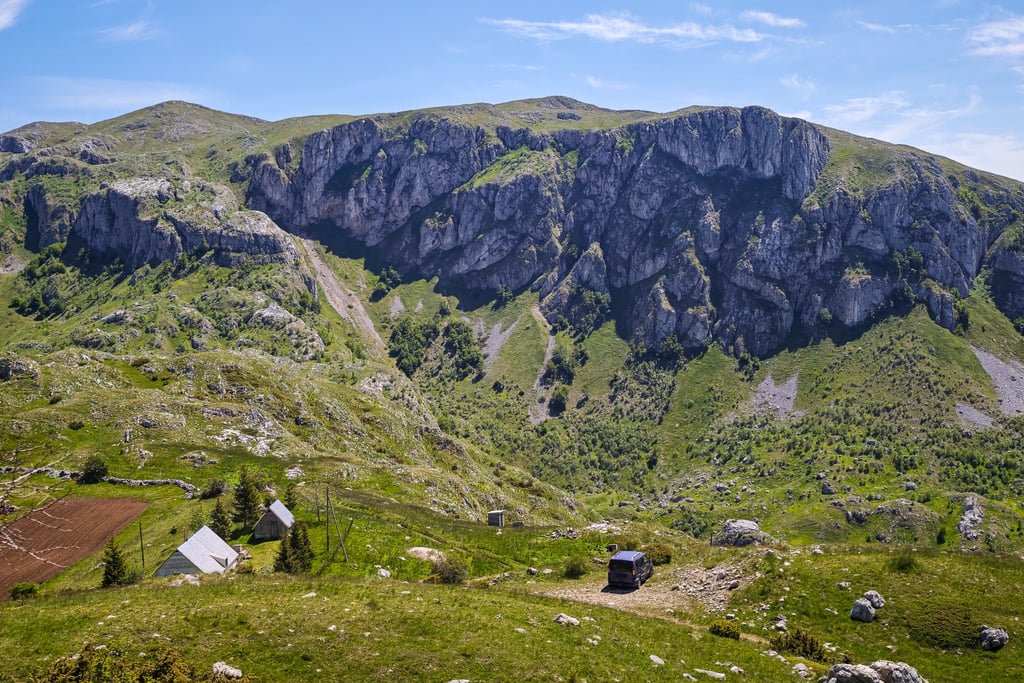

Recommended itinerary
Montenegro is a small country which you can quite fully explore within 3 weeks. Since Montenegro is not as popular as its neighbouring countries yet, the chances are high that you will have to fly to either Albania or Croatia and start your trip from there. Basically, this means that there are three potential starting points: the capital of Podgorica, Herceg Novi in the west (which you reach from Dubrovnik airport in Croatia) or Bar in the east (which you reach from Tirana airport in Albania).
It honestly doesn’t matter where you start exactly, as you can do a round trip from any of the locations. Starting from the west, this would be the loop:
Kotor Bay: Herceg Novi, Perast, Kotor, and Rose
Hopping along the coast: Ulcinj, Stari Bar, Petrovac, Sveti Stefan, and Budva
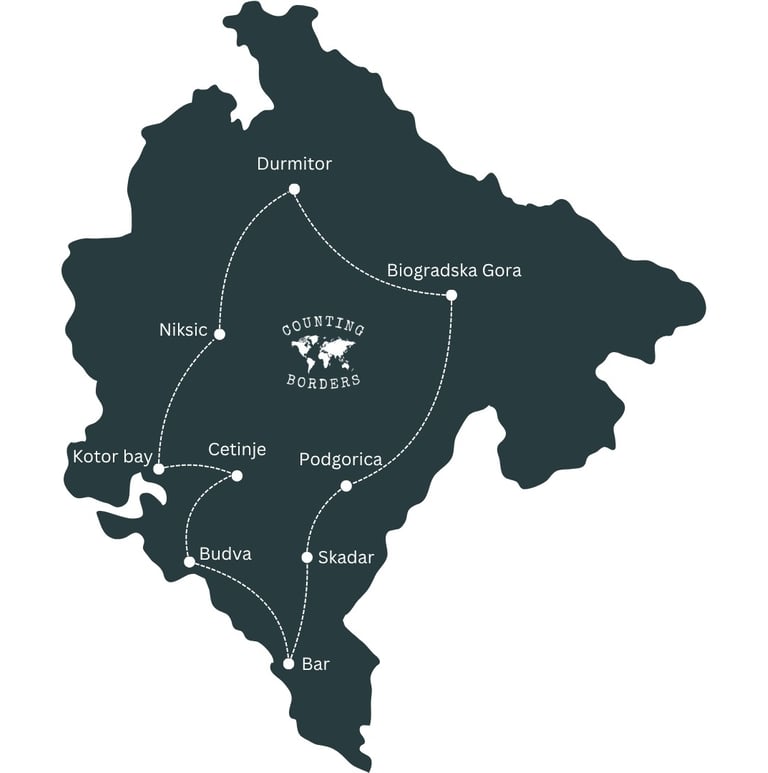

The route in short
Kotor Bay (4 to 5 days)
Explore the incredibly picturesque and historic town of Herceg Novi with its stunning squares and impressive fortress
Stroll along the romantic little seaside town of Perast and visit the Lady of the Rocks church in the middle of the bay
Teleport back to medieval times in the fortified and atmospheric town of Kotor with its stunning city walls that run across the mountains like a miniature Great Wall of China
Go off the beaten track by visiting the small town of Rose, which is as beautiful and romantic as its name
Nikšić (1 day)
Soak in the views of the incredible Slano and Krupac lakes
Drive up the meandering mountain road to visit one of the most spectacular archaeological sites in the country: the Ostrog Orthodox Monastery
Enjoy a traditional meal and cheap cocktails among locals in the centre of Nikšić
Durmitor National Park (3 to 4 days)
Visit the vast Piva Lake and canyon with its deep blue water and lush green mountains
Drive the country’s most panoramic route (P14) and be blown away by the beauty of the rolling hills, rugged mountains, and flocks of sheep and wild horses
Go on an easy hike along the Black Lake and/or a challenging yet rewarding hike to the top of the country: Bobotov Kuk
Get an adrenaline rush while white-water rafting through the Tara Canyon or canyoning through the Nevidio Canyon
Biogradska Gora National Park (1 to 2 days)
Explore the oldest and smallest national park of Montenegro by going on a 4x4 tour all across the park and along its traditional mountain villages
Discover stunning locations such as the Biogradsko and Pešića lakes
Podgorica (1 day)
Hunt for the best bars and restaurants in Montenegro’s capital
Stroll along the beautiful Morača River, visit the Orthodox Cathedral, and escape the heat in Gorica Park
Skadar Lake (2 days)
Drive along another scenic route (P16) with views over the vast lake, meandering waterways, lily-covered islands, and sleepy lakeside towns
Visit local wineries and enjoy tastings of incredible wines and other regional produce
Hopping along the coast (3 to 4 days)
Relax on Montenegro’s longest beach near the Albanian border and explore the Ottoman-influenced seaside town of Ulcinj
Explore the incredible historic and atmospheric old town of Bar, where you can still see many of its ancient structures and enjoy a lovely dinner in the cosy centre
Visit the picturesque towns of Petrovac and Sveti Stefan with their impressive Game of Thrones-like fortified peninsulas and stunning coastlines
Dive into the hustle and bustle of Budva or seek out quieter charm in the old town alleys
Cetinje and Lovćen National Park (1 day)
Drive the thrilling serpentine road from the bay into the 'black mountains' that gave Montenegro its name
Go back in time with a visit to the former royal capital of Cetinje with its beautiful old mansions and cosy city centre
Go on one last mountain hike in the beautiful Lovćen National Park


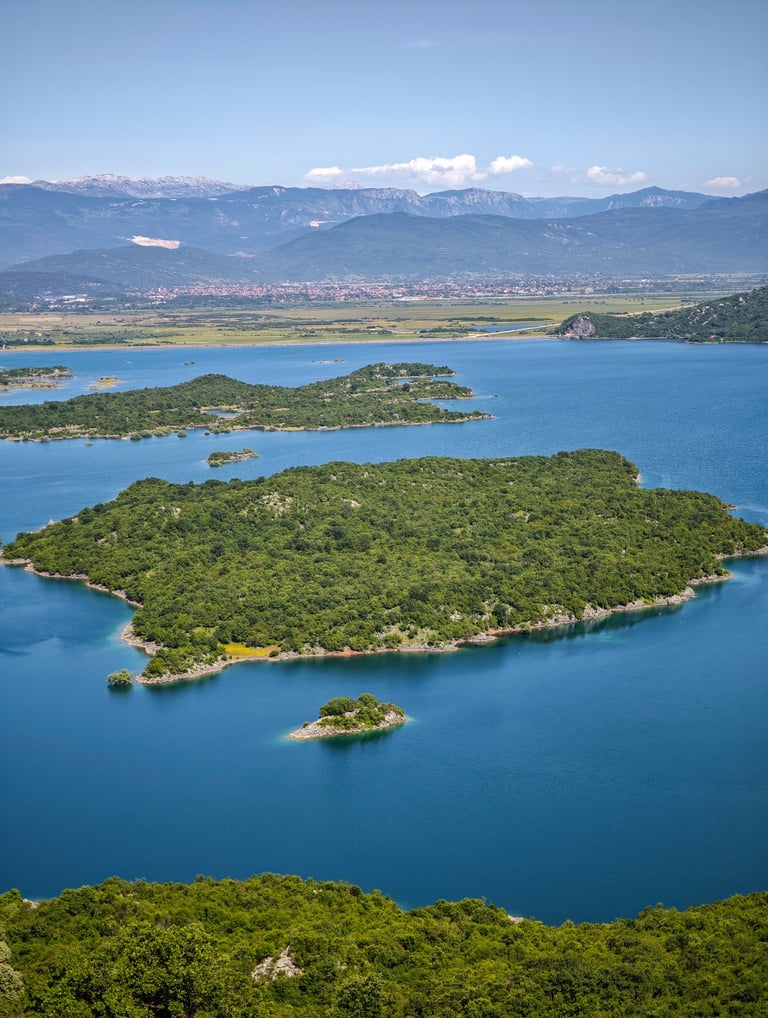

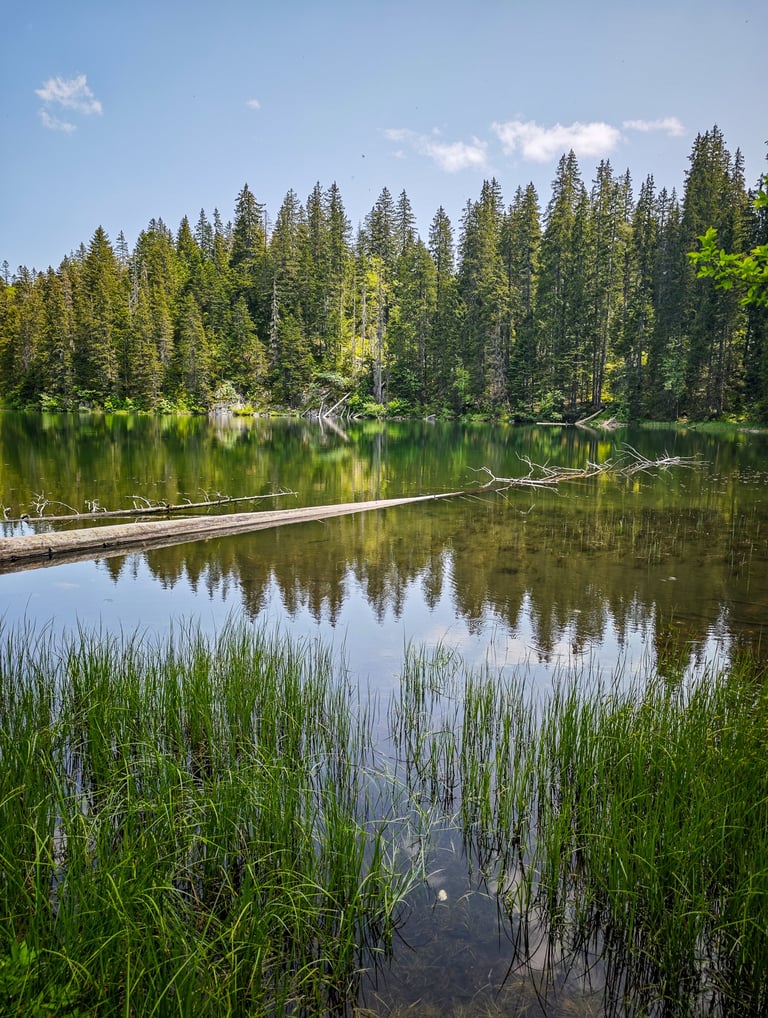

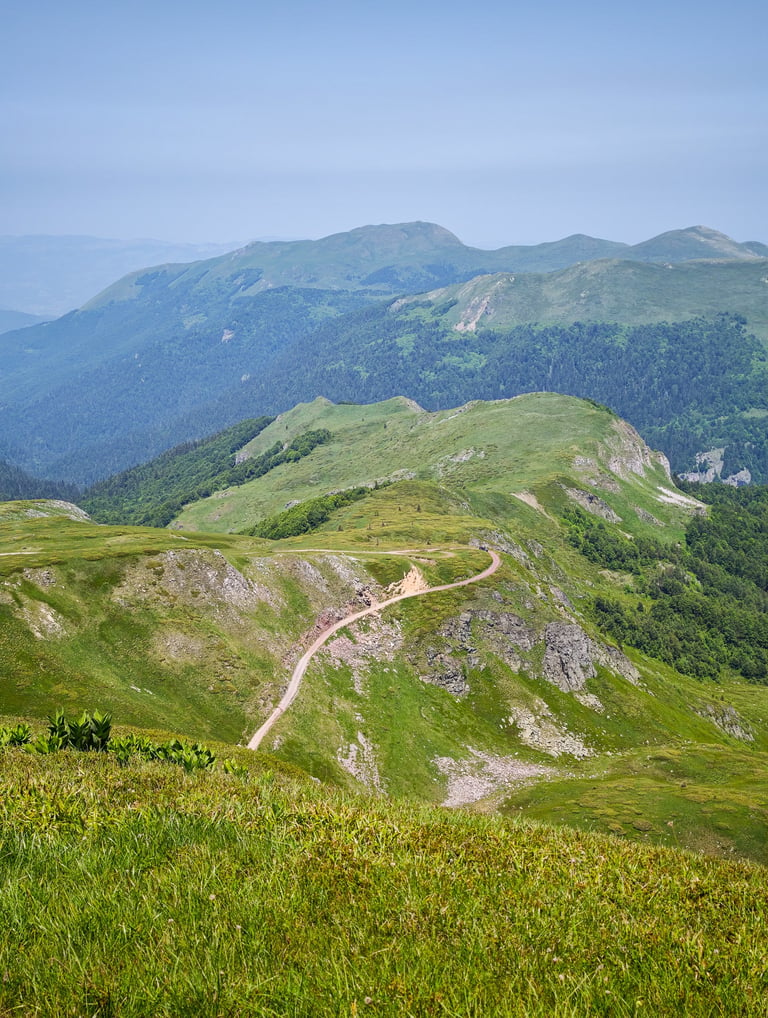

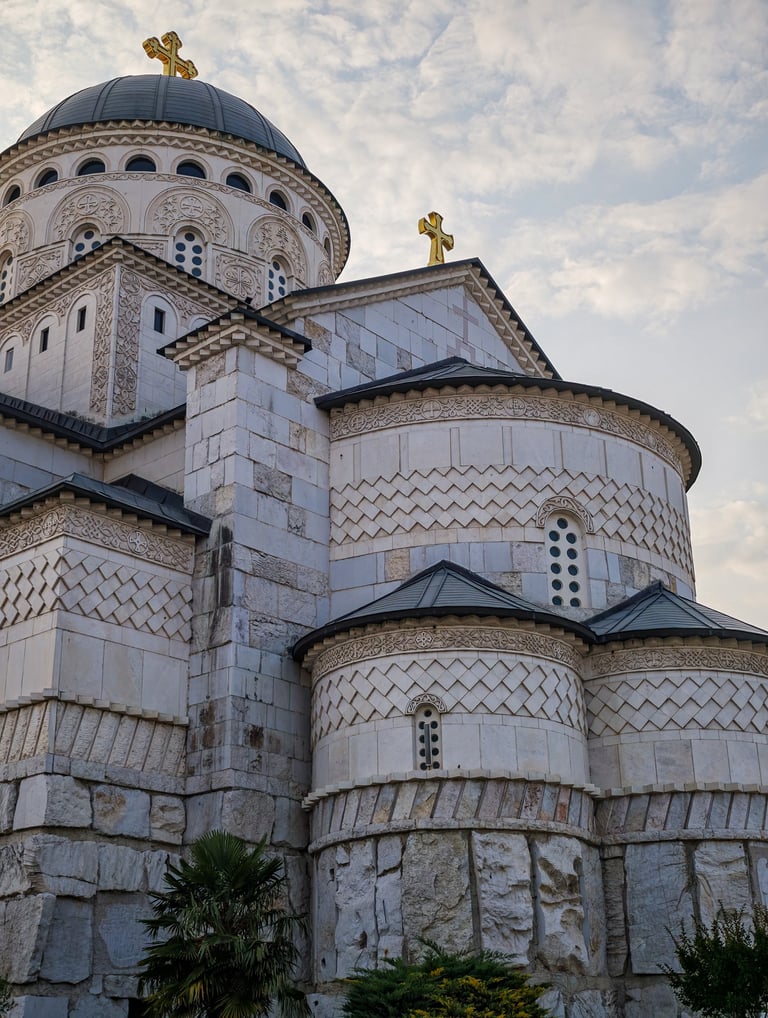

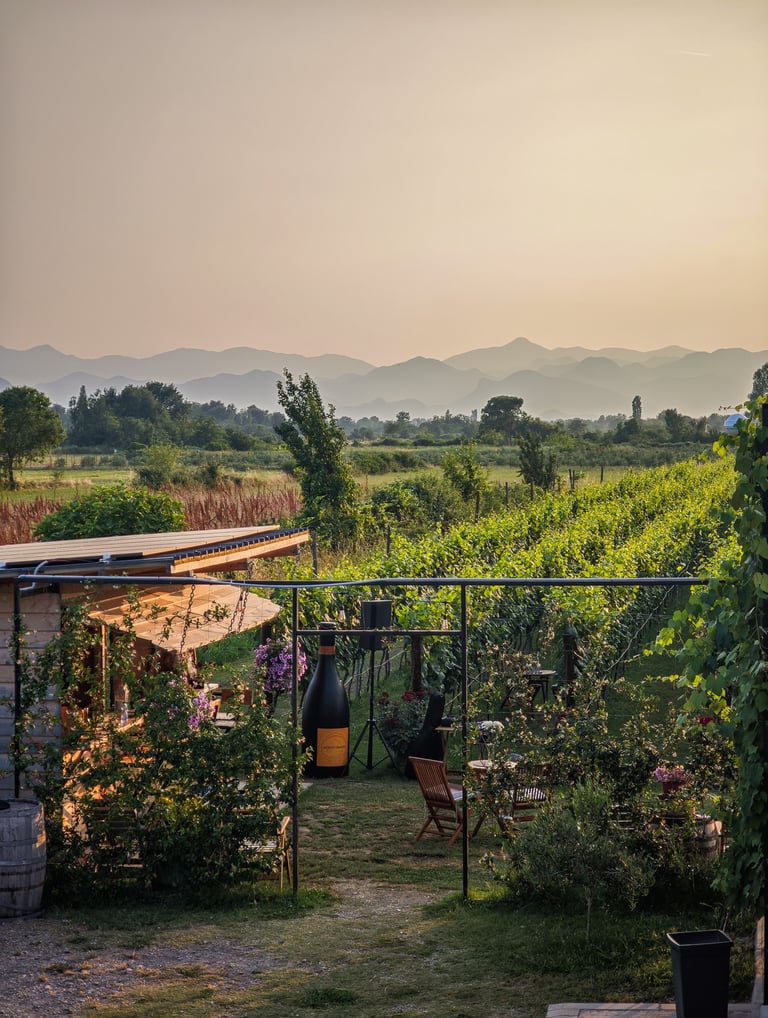

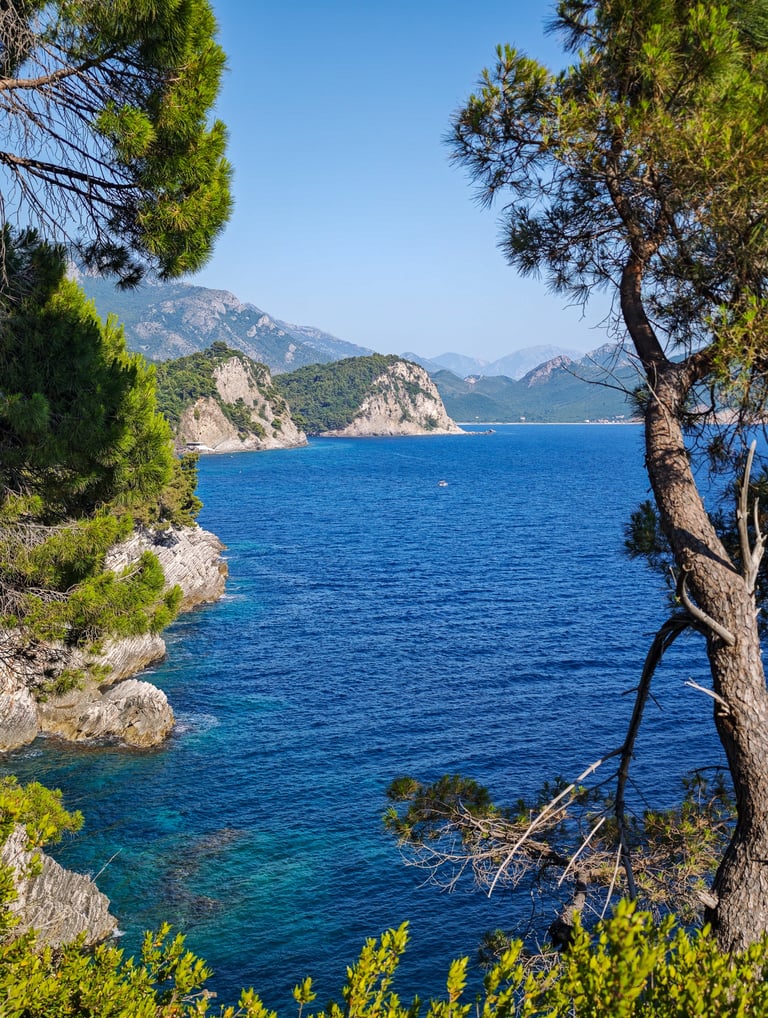

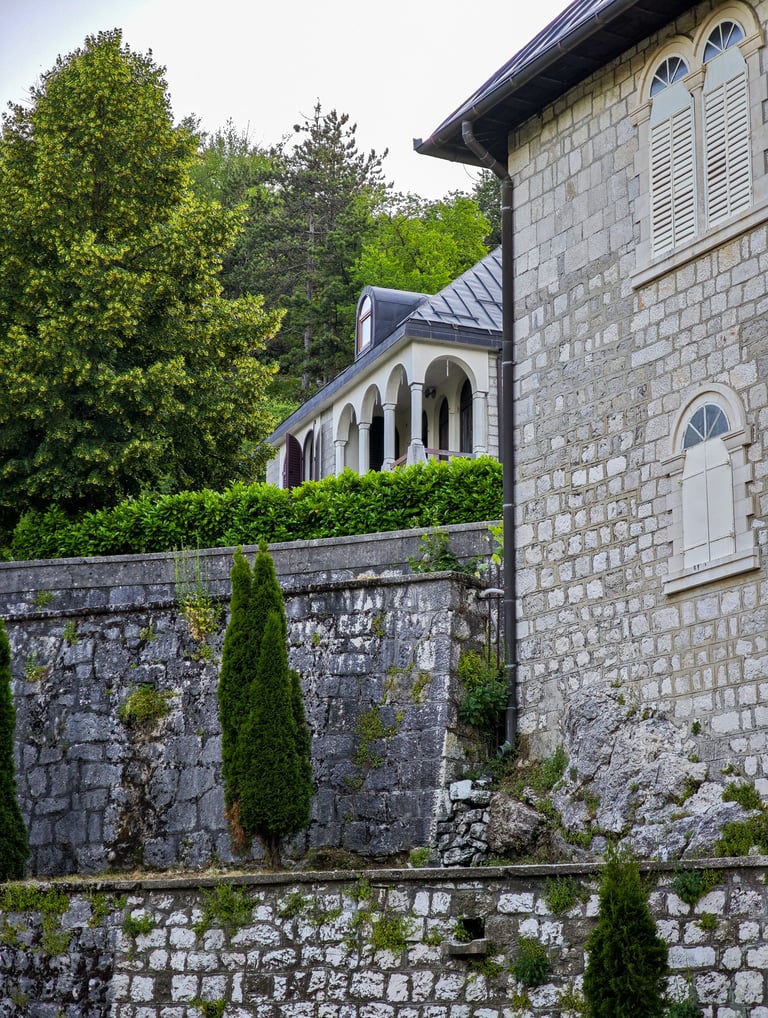

Kotor Bay
The Bay of Kotor is the most well-known part of Montenegro, partially due to it being a popular cruise destination. The landscape of the bay is truly dramatic – you wouldn’t be surprised to come across it in a Game of Thrones episode. Don’t expect cities here, as the rugged mountains that shape the bay only leave room for small, incredibly picturesque towns. We’ll take you along them one by one.
Herceg Novi
Herceg Novi sits at the entrance of the Bay of Kotor, just a short drive from the Croatian border. It’s a relaxed coastal town known for its long seafront promenade and mix of architectural styles shaped by centuries of changing rule.
The Old Town is small but full of character, with narrow, flower-filled staircases, worn stone streets, and little squares framed by faded facades and overgrown vines. Forte Mare sits right above the water. This old ‘Sea Fortress’ has been expanded and rebuilt by various empires and today offers a short but worthwhile climb for panoramic views.
As you walk further toward the centre, you’ll come across several picturesque squares, such as Belavista Square, a lively spot with cafés and benches where locals stop for coffee and conversation, with its small but beautiful Saint Michael Archangel Church. In the centre, the stunning Clock Tower overlooks Nikola Đurković Square. Climb up to the Kanli Kula, a 16th-century fortress turned open-air theatre, which offers some of the best views over the bay and insight into the town’s history.
One of Herceg Novi’s best features is its seaside walkway, the Šetalište Pet Danica. It stretches for about 7 kilometres, connecting the town to Igalo and Meljine. Along the way, you’ll pass pebbled beaches, floating docks, beach bars, and locals diving into the Adriatic. It’s a perfect place for an afternoon walk or a sunset drink.
Just outside the centre, the Savina Monastery offers a quieter atmosphere. Surrounded by pine and cypress trees, this Orthodox complex includes two churches and a small museum. If you're in the mood for wine, visit the nearby Savina Winery for a tasting with incredible views.
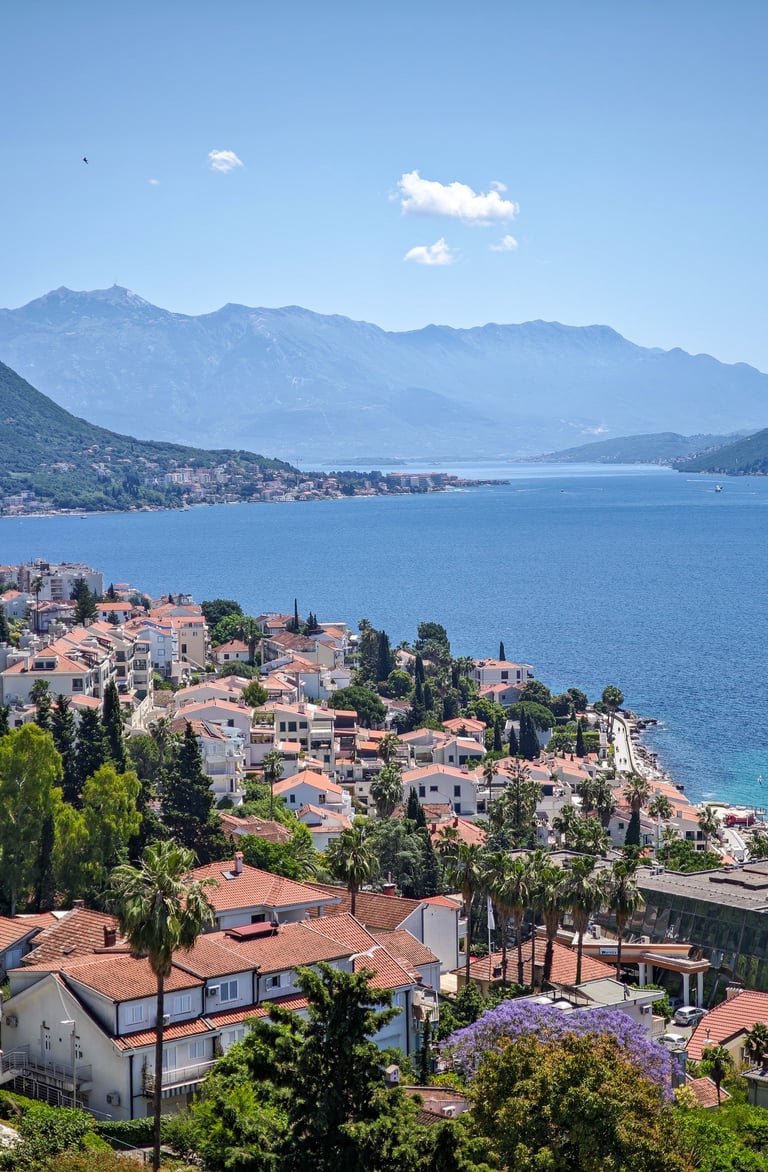

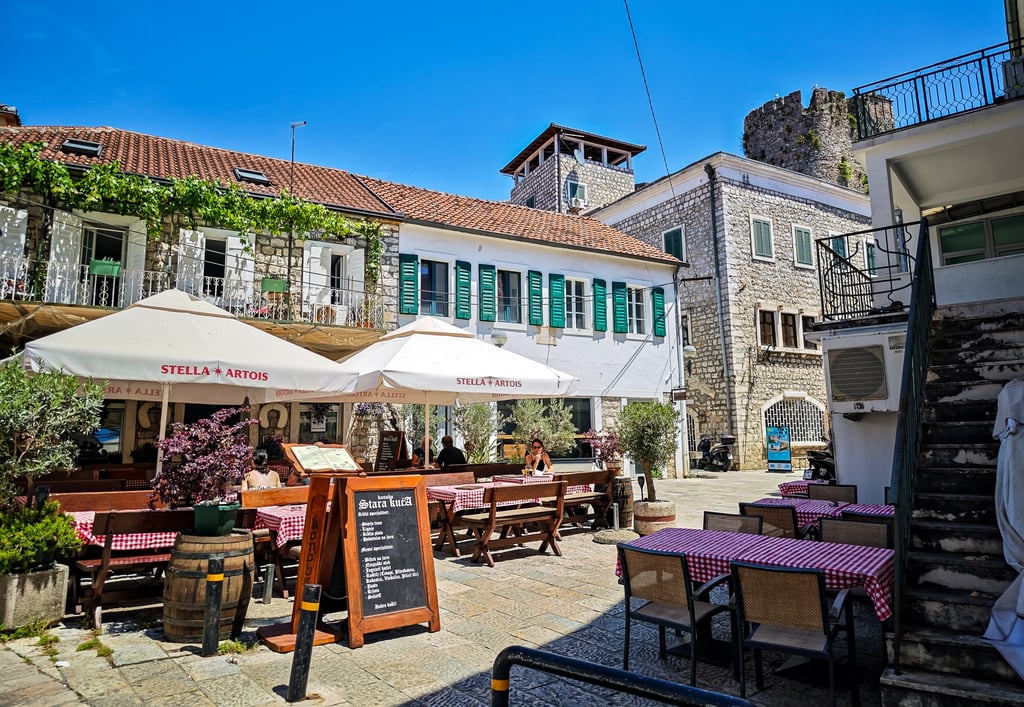

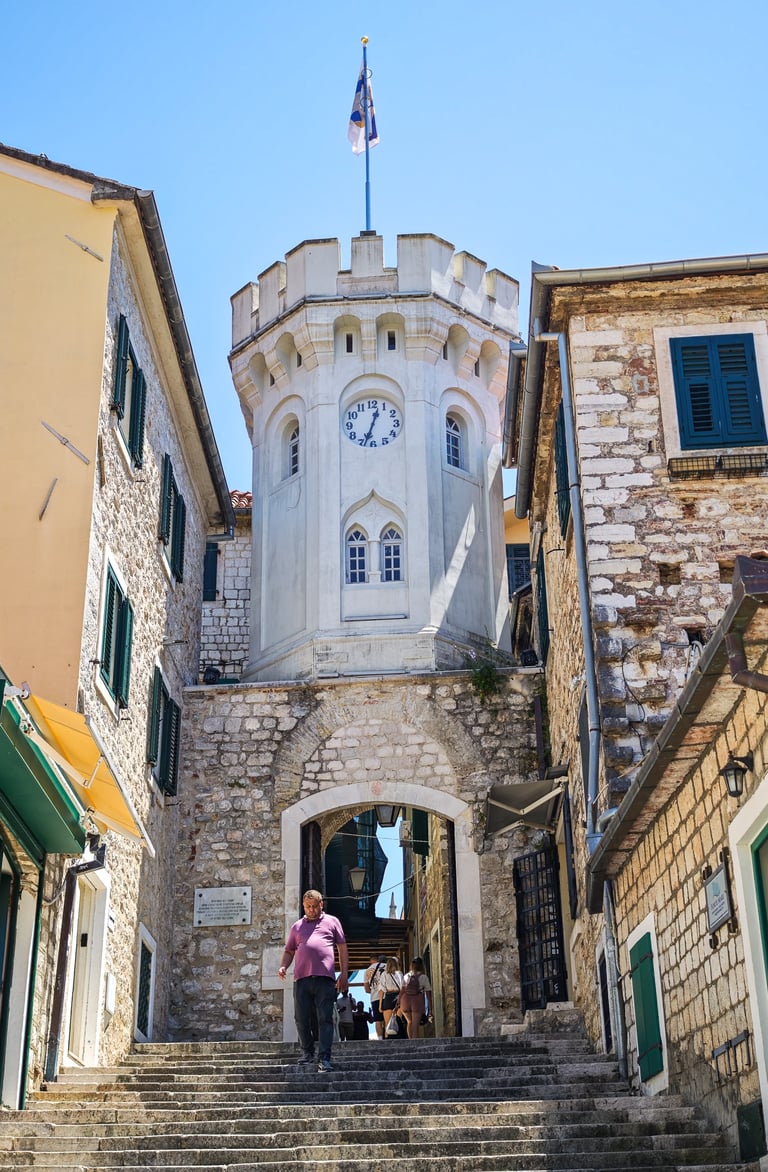


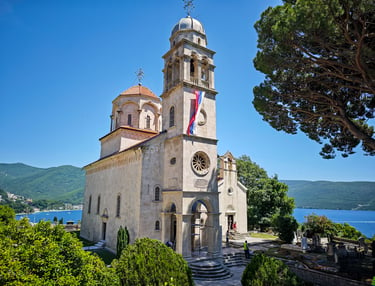
Perast
Perast is a small, elegant town on the Bay of Kotor, located just a short drive from Kotor. With its baroque architecture, quiet waterfront, and views of two picture-perfect islands, it feels more like a film set than a real town.
Despite its size, Perast was once a wealthy maritime centre, and you can still sense that legacy in the grand stone palaces lining the shore. The town has just one main street that runs along the water, making it ideal for a slow stroll. There are no beaches, but plenty of stone jetties where locals and visitors sunbathe or dip into the calm bay.
In town, don’t miss St. Nicholas Church, with its tall bell tower rising above the rooftops. For a small fee, you can climb it for sweeping views over the bay and islands. The waterfront cafés and restaurants are plentiful, many set right by the water with uninterrupted views – perfect for a peaceful lunch or lazy afternoon.
The most iconic sight is the tiny island of Our Lady of the Rocks, reached by a short boat ride from the waterfront. This artificial island was built in the 15th century and holds a small church and museum showcasing centuries of local seafaring history. Right next to it lies Saint George, a natural island with a Benedictine monastery (not open to visitors, but still picturesque).
One experience we highly recommend, though a bit on the pricey side, is visiting the Underwater Wine Cellar Kraken Kotor. This is a floating bar near Perast. You’ll need to book in advance, as a reservation includes boat transport from a pick-up point. The wine, aged under the sea, may be more of a gimmick than a true taste revolution, but the experience of sipping it on the water, snacking on fresh mussels, and taking a dip is fantastic.
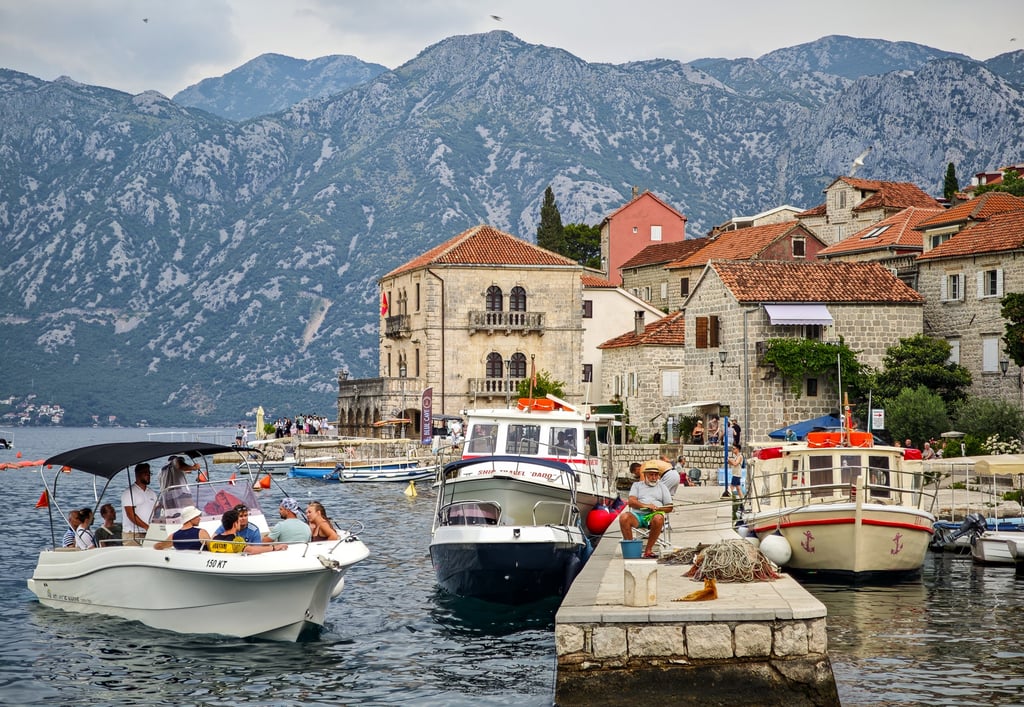

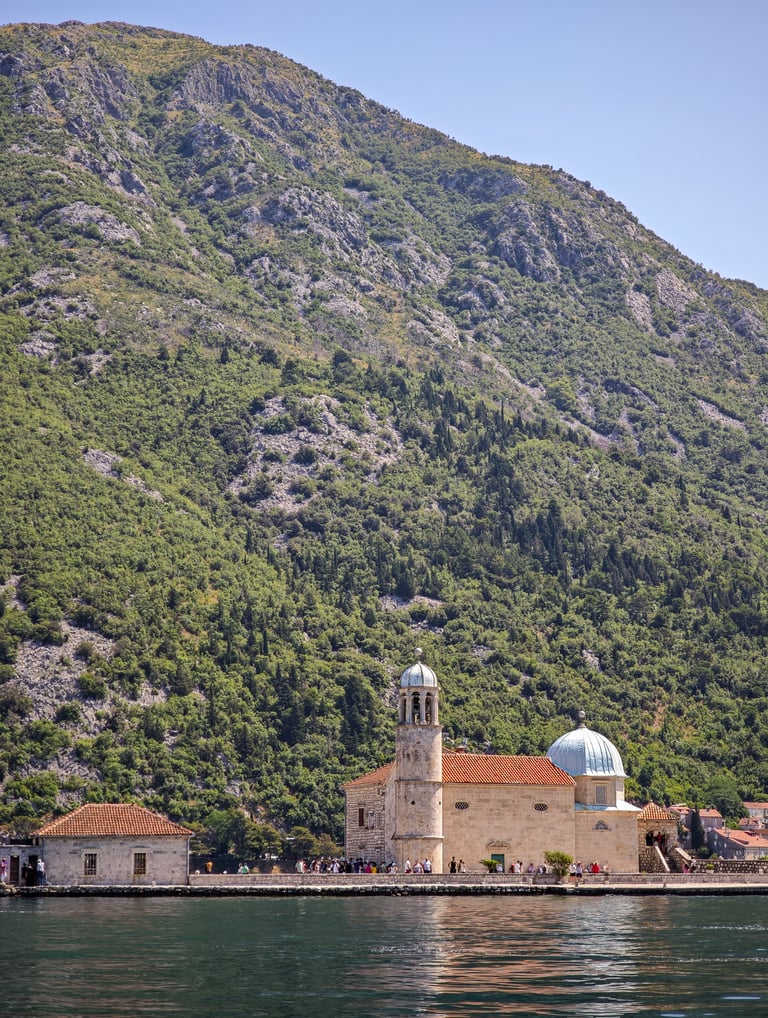


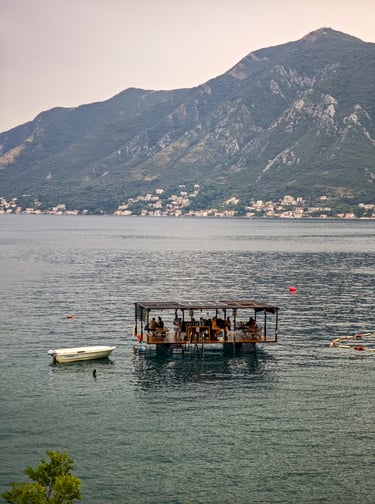
Kotor
Kotor is one of Montenegro’s most iconic destinations, tucked deep into the bay and surrounded by towering limestone cliffs. With its medieval walls, winding alleys, and dramatic setting, the town feels historic and cinematic, especially in the golden light of early morning or late afternoon.
The Old Town is a UNESCO World Heritage Site, and one of the best-preserved in the Adriatic. Within the city walls, you’ll find a maze of narrow stone streets, lively squares, and tiny churches nestled between cafés and souvenir shops. Notable landmarks include the Cathedral of Saint Tryphon, with its twin towers and Romanesque style, and the Church of Saint Nicholas, a major Orthodox site.
A boat tour is one of the best ways to explore the bay. Ours included stops at an old Yugoslav submarine shelter (featured in a Bond film) and the Blue Cave, where the water glows turquoise inside the rocks. The Blue Cave was a bit underwhelming in our opinion, but the other stops made up for it. On the way you also pass by the impressive Mamula Fortress, which is now the most expensive resort of Montenegro. These tours also stop at Our Lady of the Rocks and often offer some swimming if you want as well.
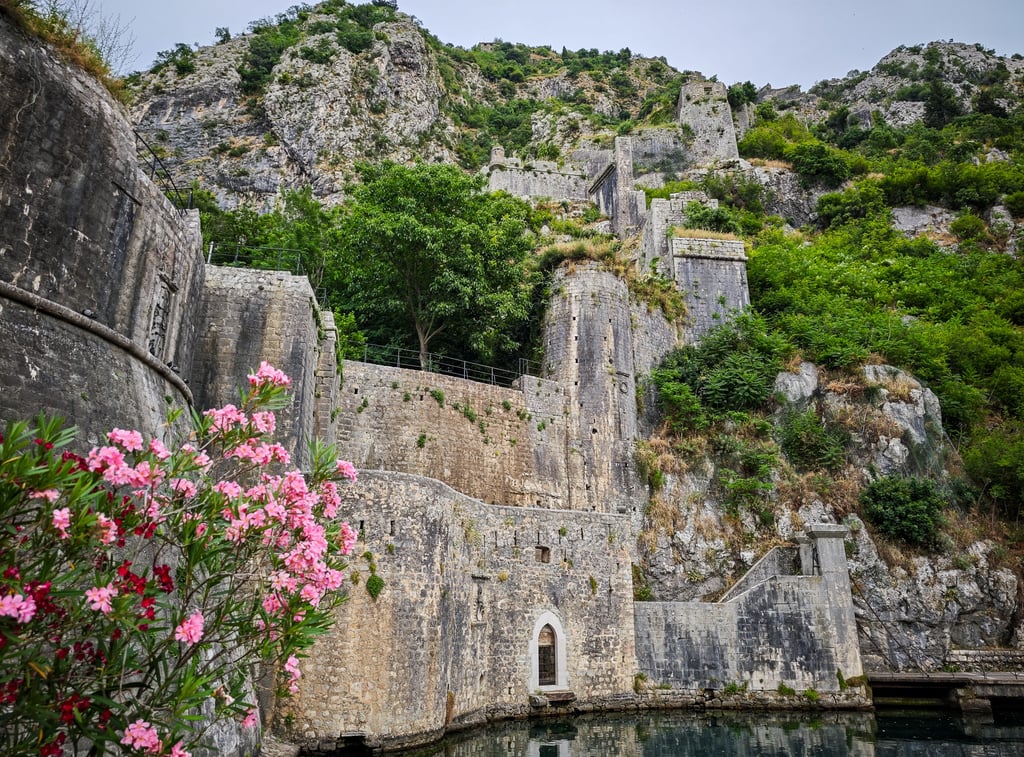

For an unforgettable view, climb to the top of Kotor Fortress (San Giovanni Fortress). It’s a steep ascent with more than 1,300 steps, but the views over the bay are worth every drop of sweat. Start early or go just before sunset to avoid the heat.
Despite its popularity and cruise ship crowds, Kotor has kept its charm. Step off the main squares and explore the quieter side alleys. For dinner, we recommend Le Catedral Pasta Bar and Trattoria Karampana. The abundance of Italian restaurants reflects Kotor Bay’s Venetian heritage, just like the name Montenegro, which is Crna Gora in the local language.
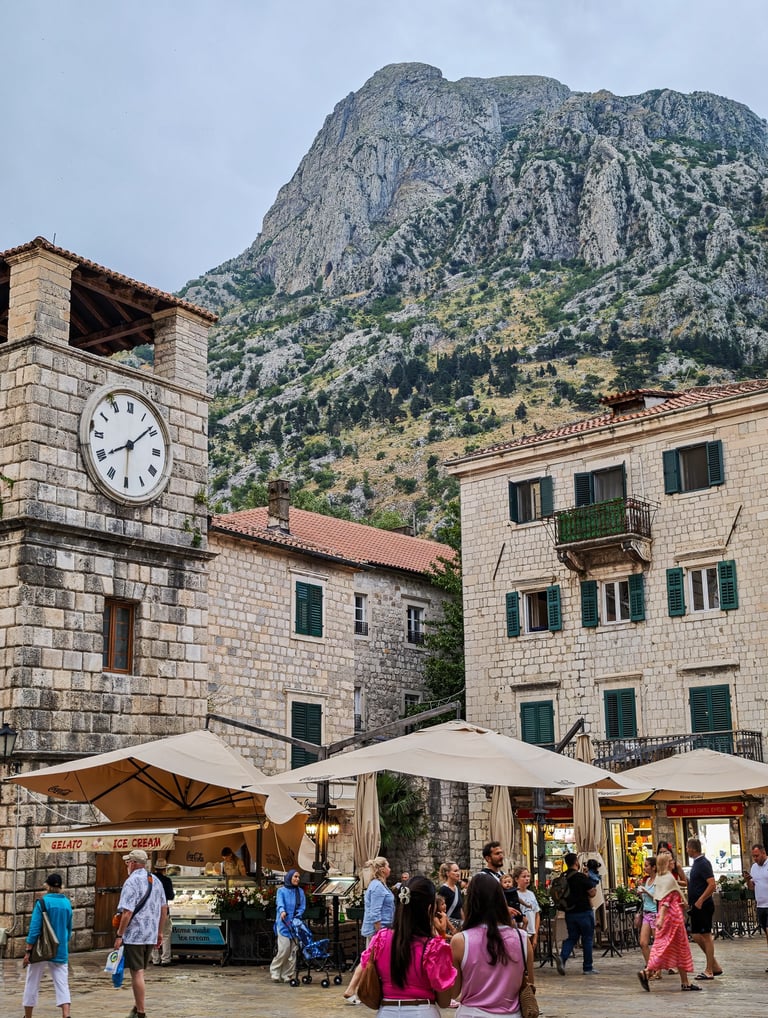

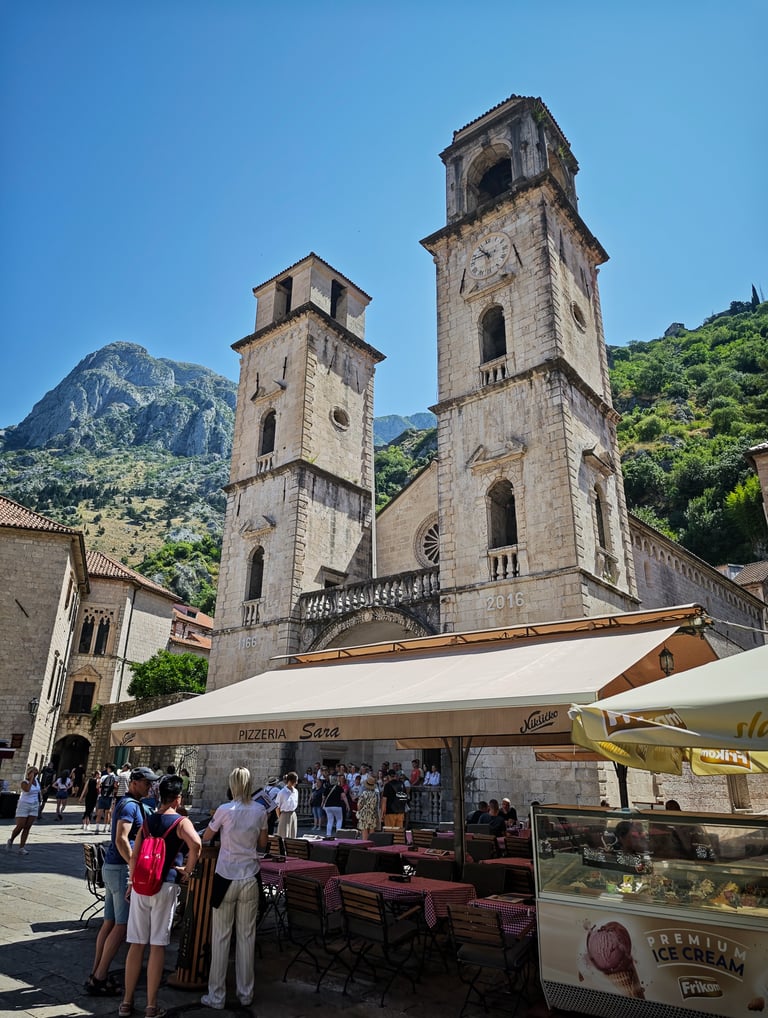


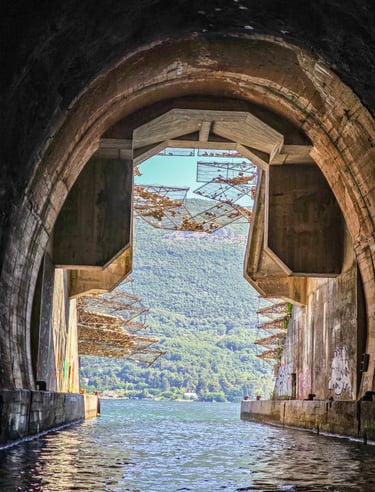
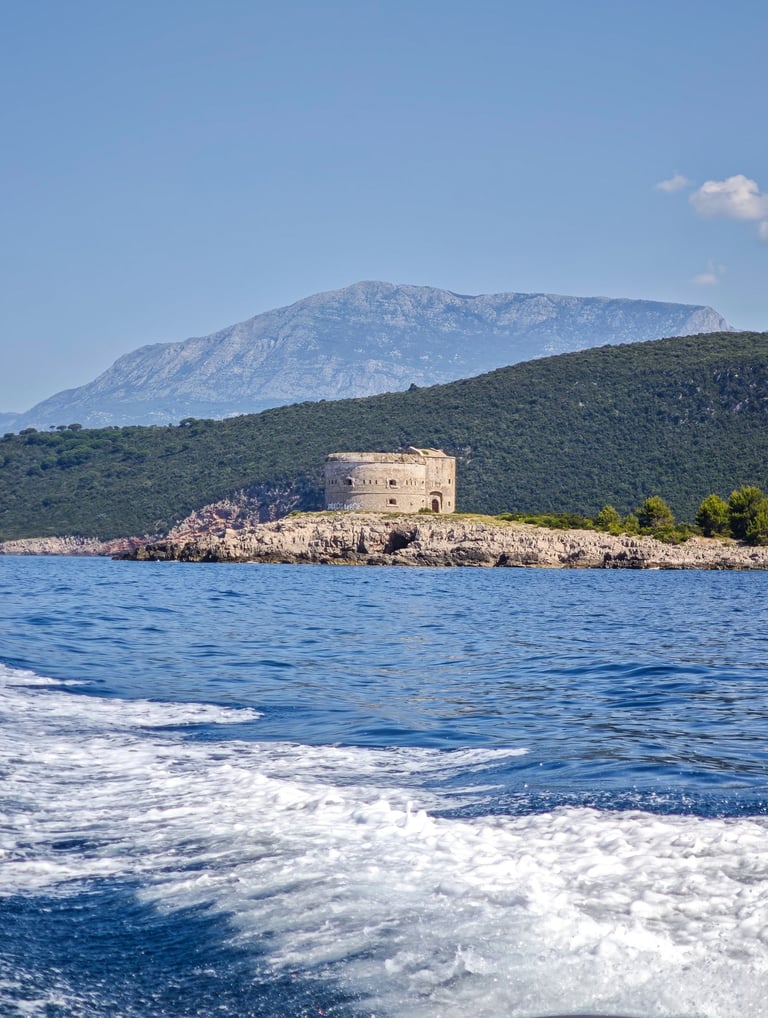

Rose
Rose is a small, peaceful village tucked away at the very tip of the Luštica Peninsula, right across the bay from Herceg Novi. With no big hotels, no crowds, and barely any traffic, it’s the kind of place you stumble upon and remember for its quiet charm. The village stretches along a narrow waterfront lined with old stone houses, small jetties, and a few relaxed cafés and restaurants. It’s one of the oldest settlements on the bay and arguably the most picturesque, which is why we chose it as the cover photo of this guide.
There’s no long list of “must-sees” here, but that's part of its charm. You can just slow down, take in the views while enjoying a long lunch, and perhaps take a refreshing swim. There are a few guesthouses and apartments, most with waterfront views. We wouldn’t recommend staying more than a night due to its remote location, but it’s a perfect spot for a romantic getaway.
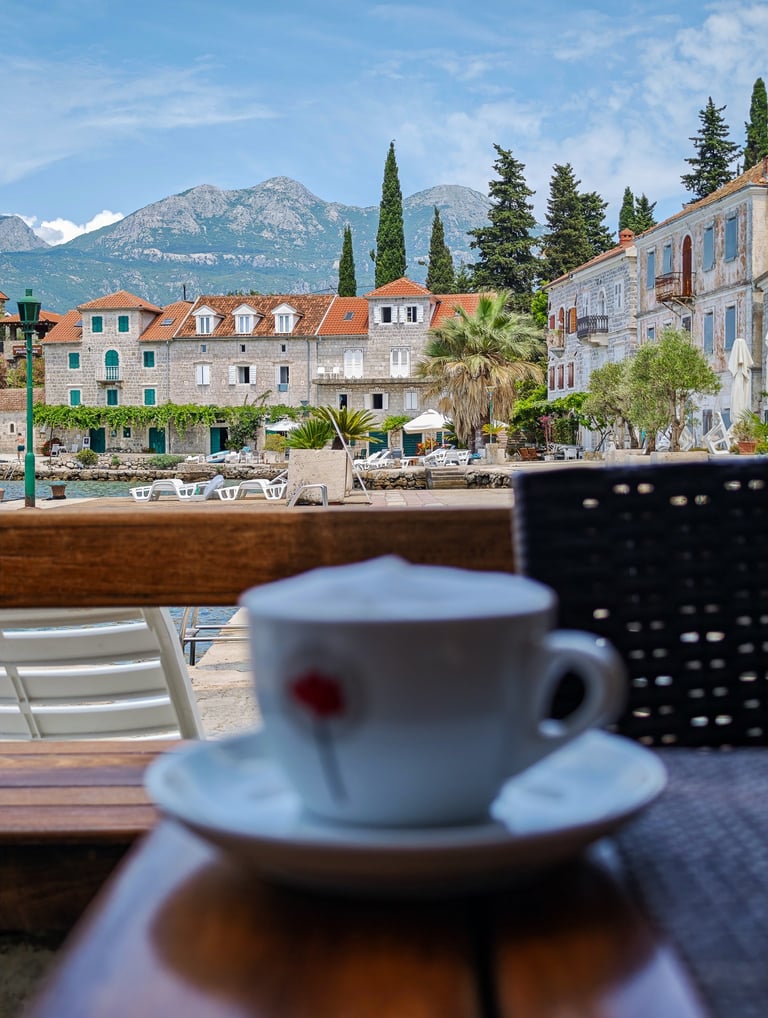

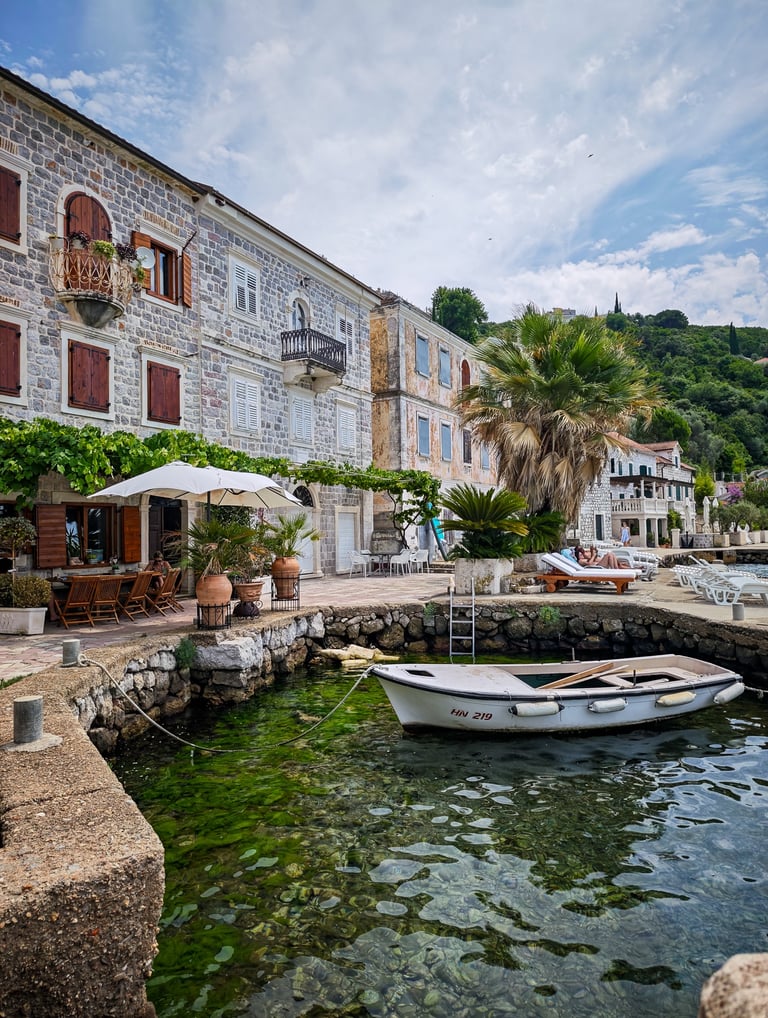

Nikšić
Nikšić is Montenegro’s second-largest city, located in the central part of the country between Podgorica and Durmitor National Park. It’s often overlooked by travelers, but it can make a convenient stop on the way north, offers an insight into a very different part of Montenegro, and has several worthwhile sights as well.
The city itself has a more ‘rough around the edges’ feel compared to coastal towns, with wide streets, concrete buildings, and large open squares. It’s definitely a place that will remind you of Montenegro's communist past. While it doesn’t really have the charm of Montenegro’s older villages, there are still a few spots worth visiting. Freedom Square (Trg Slobode) is the heart of the city, lined with cafés and shops, and a popular place to sit with a drink and watch local life go by. We especially enjoyed having crazily cheap cocktails at the super cosy Propaganda bar.
One of Nikšić’s best features is its easy access to nature. Just a few minutes outside the city you’ll find Krupac Lake, a popular local spot for swimming, kayaking, and relaxing by the water during the warmer months. The lakeside cafés have a casual, summery vibe, and the water is calm and clear. When driving from Kotor Bay to Nikšić, you’ll pass Slano Lake, of which you can enjoy some incredibly scenic views if you stop at the Panorama café next to the road. It’s an incredibly simple café with five-star views!
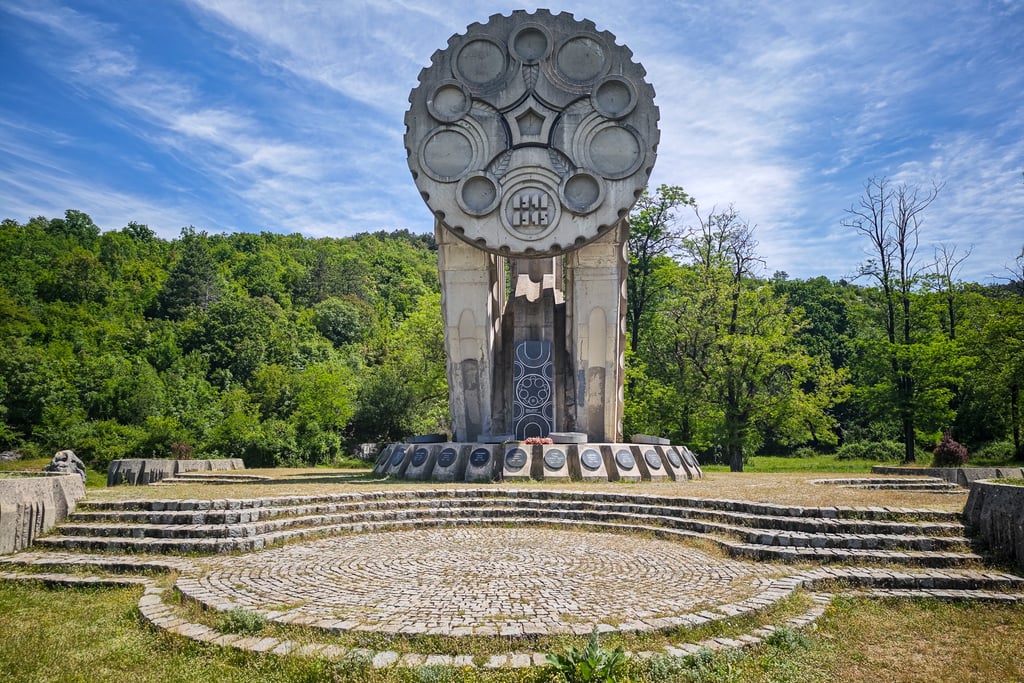

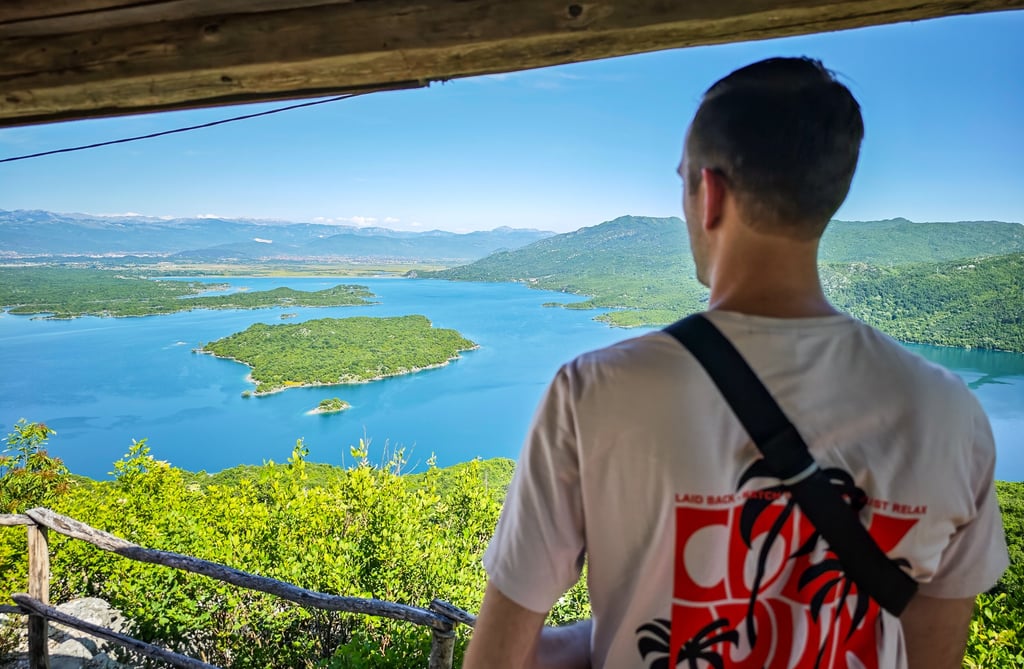

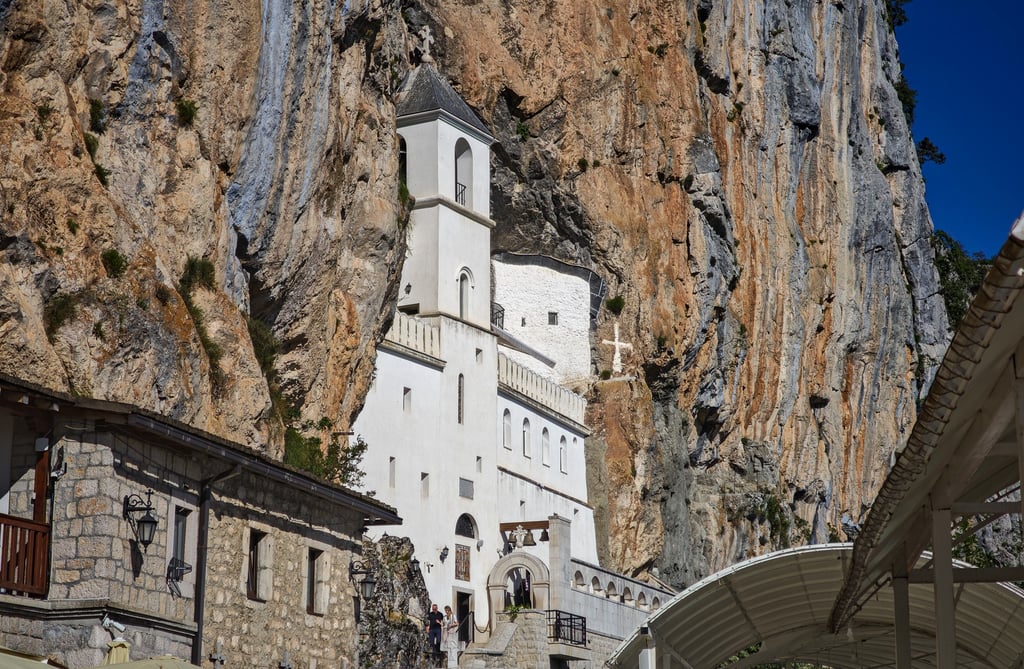

Not far from the city, you’ll find the Ostrog Monastery, one of Montenegro’s most important pilgrimage sites. Built dramatically into a cliffside, it draws visitors of all backgrounds with its unique setting and peaceful atmosphere. The monastery itself is rather small, but the architecture is beautiful due to the contrast of the white rocks against the brown cliffs and the mosaic artwork inside. The drive up offers great views, although we have to warn people with a fear of heights, as you’ll be doing some scary cliff driving to get up here.
Durmitor National Park
Durmitor National Park is located in the north of Montenegro, near the town of Žabljak. It’s the country’s largest national park and a UNESCO World Heritage Site, known for its dramatic mountain peaks, glacier lakes, deep canyons, and endless hiking trails. Durmitor is best visited from late spring to early autumn, when the trails are snow-free and the lakes are at their most beautiful. It’s a great place to escape into the mountains, breathe fresh air, and explore a wilder side of Montenegro.
One of the park’s most popular spots is Black Lake (Crno Jezero), just a short drive from the centre of Žabljak. The lake sits in a forested valley beneath the mountains and is an easy starting point for short walks or longer hikes deeper into the park. You can do a loop around the lake or head further up to places like Zminje Lake. For more adventurous travellers, there are plenty of marked trails leading to mountain summits, with Bobotov Kuk being the highest and most challenging at 2,522 meters.
The Tara River Canyon is one of the deepest in Europe. You can visit the impressive Đurđevića Tara Bridge and participate in some bungy jumping if you’re a true adrenaline junky, or you can go on a lighter adventure in the form of a white-water rafting trip. In the Nevidio Canyon, it’s possible to go on a guided canyoning trip, which entails climbing over rocks, swimming and jumping. This was definitely more of an adventure that we had anticipated, but truly worth the thrill. We can highly recommend North Challenge Montenegro for both rafting and canyoning as they took great care of us.
A more of the beaten track sights to visit is the Vrazja lake, which doesn’t seem that spectacular but if you walk to higher grounds above it and the weather is clear, it’s actually quite an amazing sight. Nearby you can also find a Stecci, which is a medieval stone grave yard. These are actually scattered all over Montenegro and make up a UNESCO sight together. This was is particularly impressive to visit just before sunset when the solitude of the place gives it a very mysterious feeling.
Finally, if you find yourself with some more time on your hands, you can pay a quick stop to the coal mining town of Pljevlja in the north, close to the borders with Serbia and Bosnia. One of its main sights is the Husein-paša’s Mosque, one of the largest in the Balkans, with a beautiful courtyard and intricate details. The Holy Trinity Monastry on the edge of town is also rather picturesque and you can have a drink at one of the local restaurants near Vodice Park. It truly isn’t a must-visit sight but in case the direct highway to Biogradska is closed like when were there, you might as well enjoy the detour.
When you do, definitely stop at the Meandri Ćehotina viewpoint as well. This spot offers a stunning view over the deep curves of the Otilovići Reservoir, as it snakes through the rugged landscape below. The combination of steep cliffs, forested hills, and the shimmering river creates a dramatic natural scene. Make sure you follow the highway and not take the seemingly straight line which Google Maps might direct you on, as these are horrible back roads that can lead to some serious trouble.
You don’t have to go all out on hiking to experience the beauty of Durmitor. One of the best alternatives or additions is to drive the Durmitor Ring, which is marked as the P14 road. You have two options in this regard, the first one is to start at the incredibly blue Piva Lake in the north and then drive half of the loop from there to Žabljak. This way, you drive the easiest part of the narrow scenic route and arguably the most stunning part with a variety of the landscapes Durmitor has to offer.
You can also opt for the full circle. In that case, you’ll also drive along the dramatic Tara River Canyon. We’ve read that this is a bit more challenging due to the even narrower roads and cliffs, so we would suggest driving the loop the other way around (counterclockwise) so you’ll drive on the mountainside all the way.
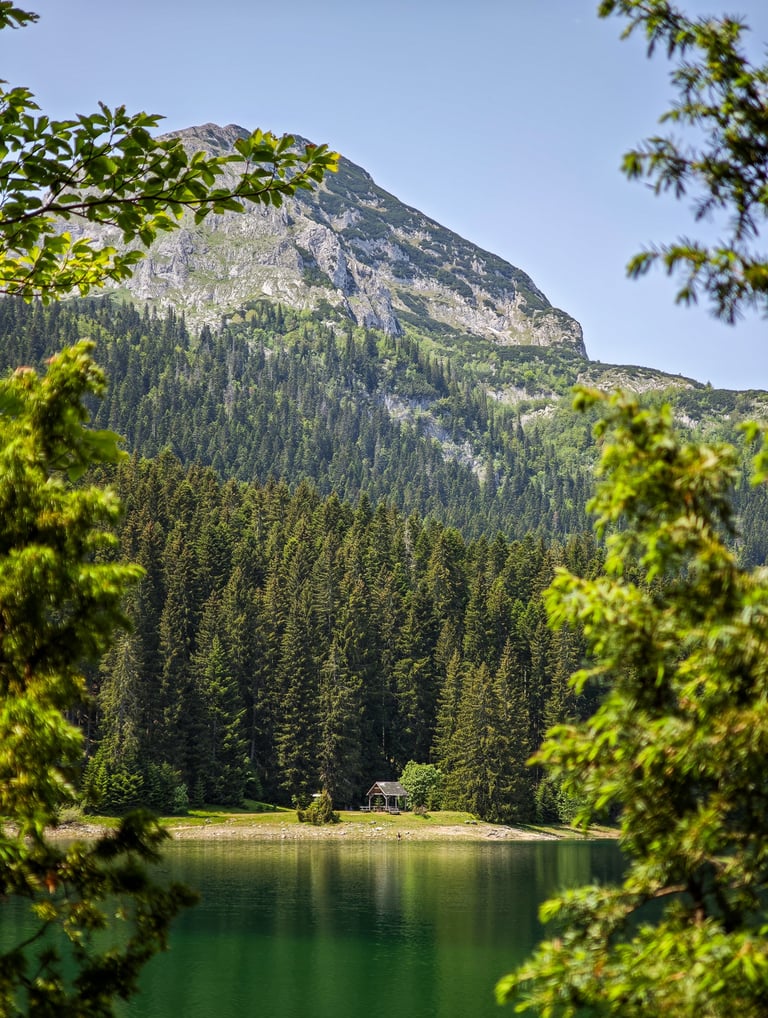

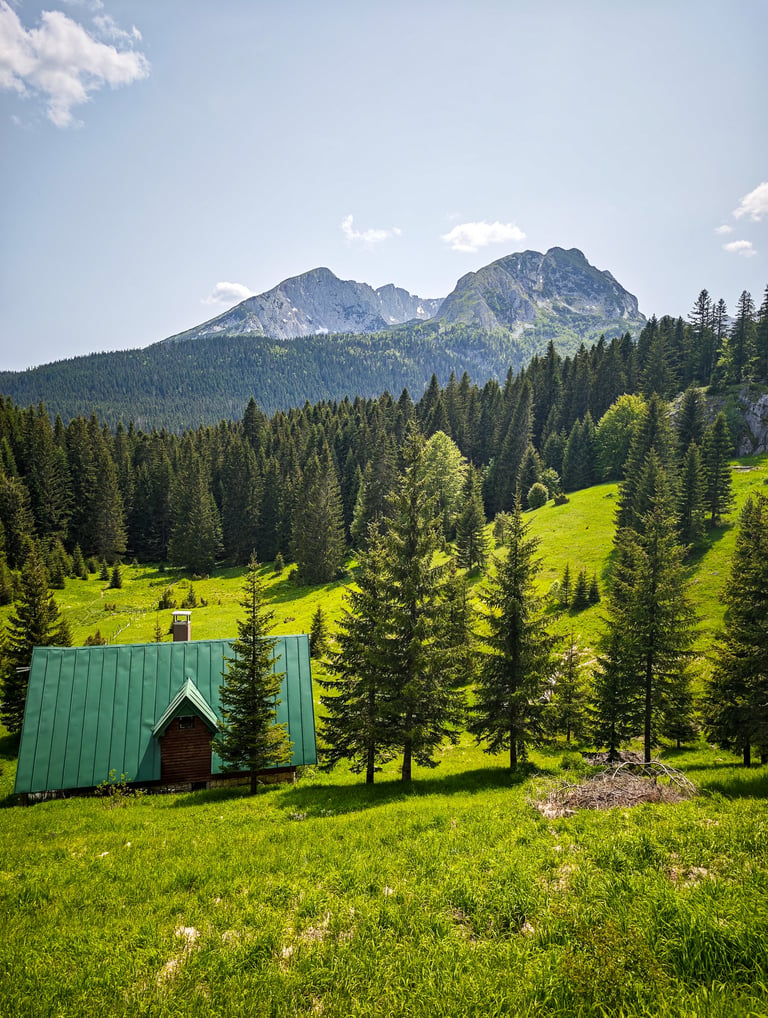

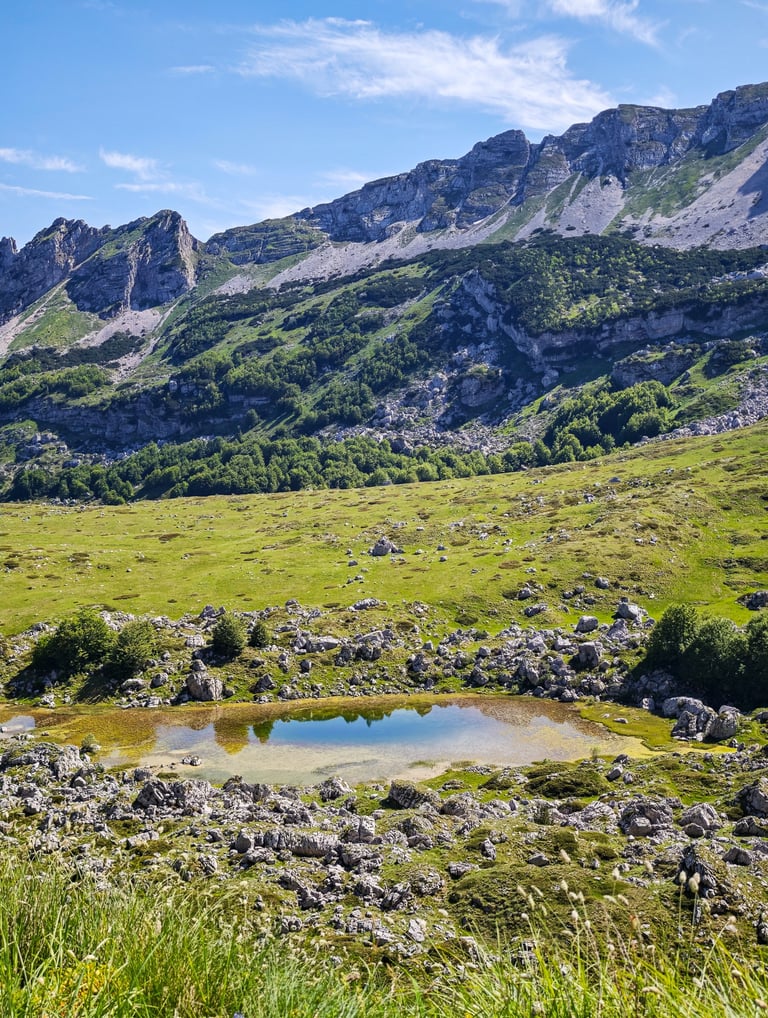

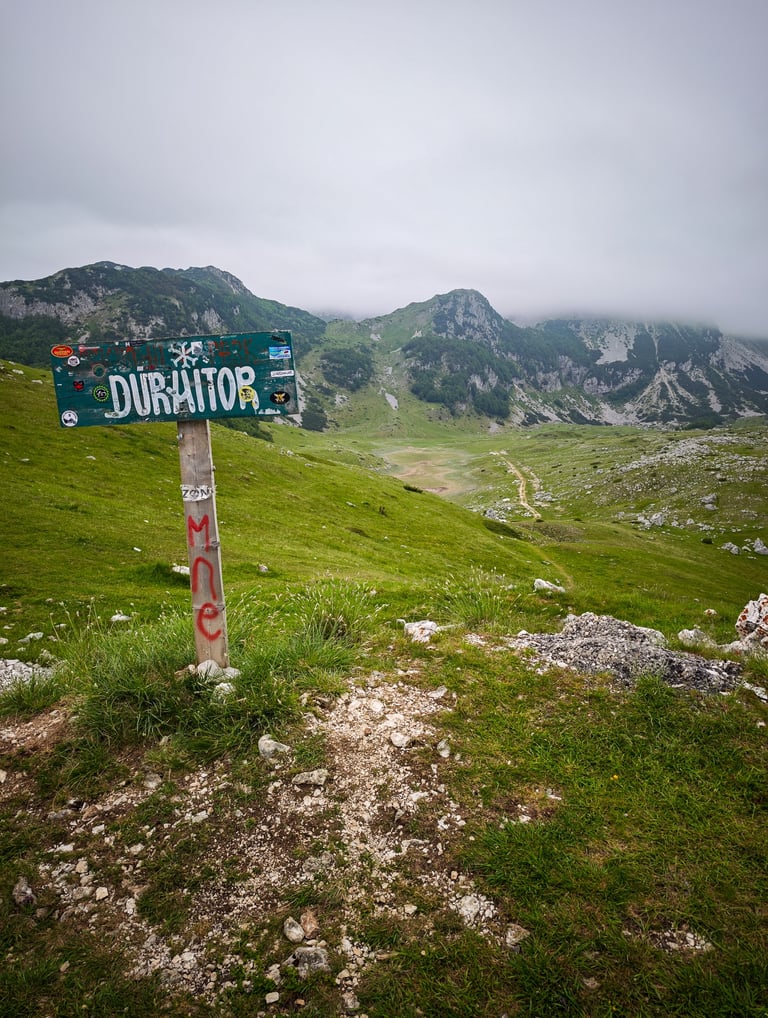

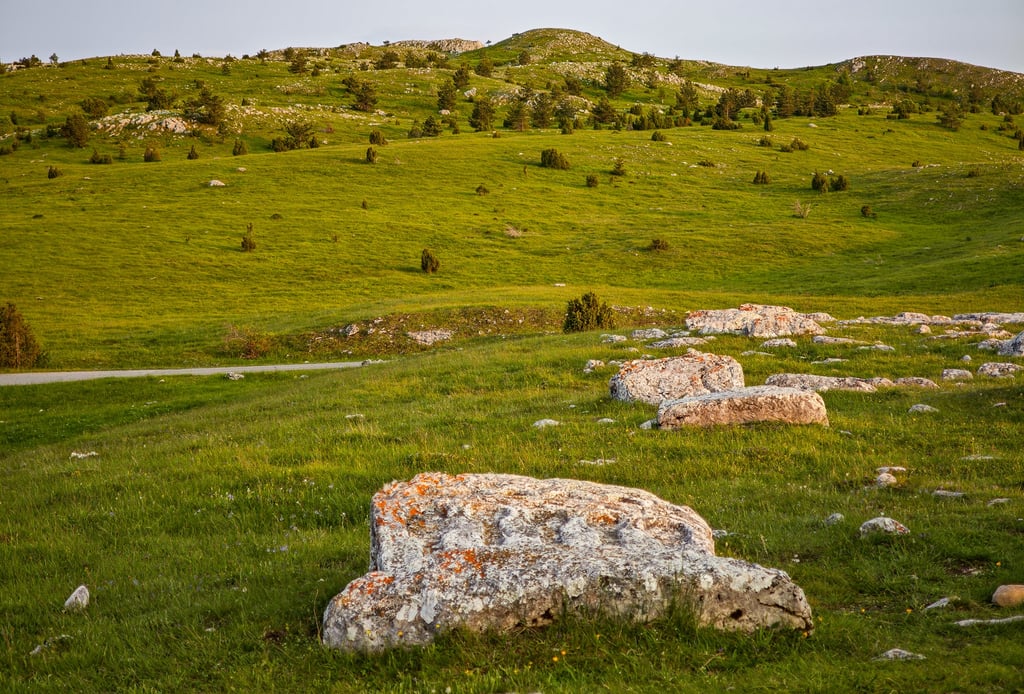

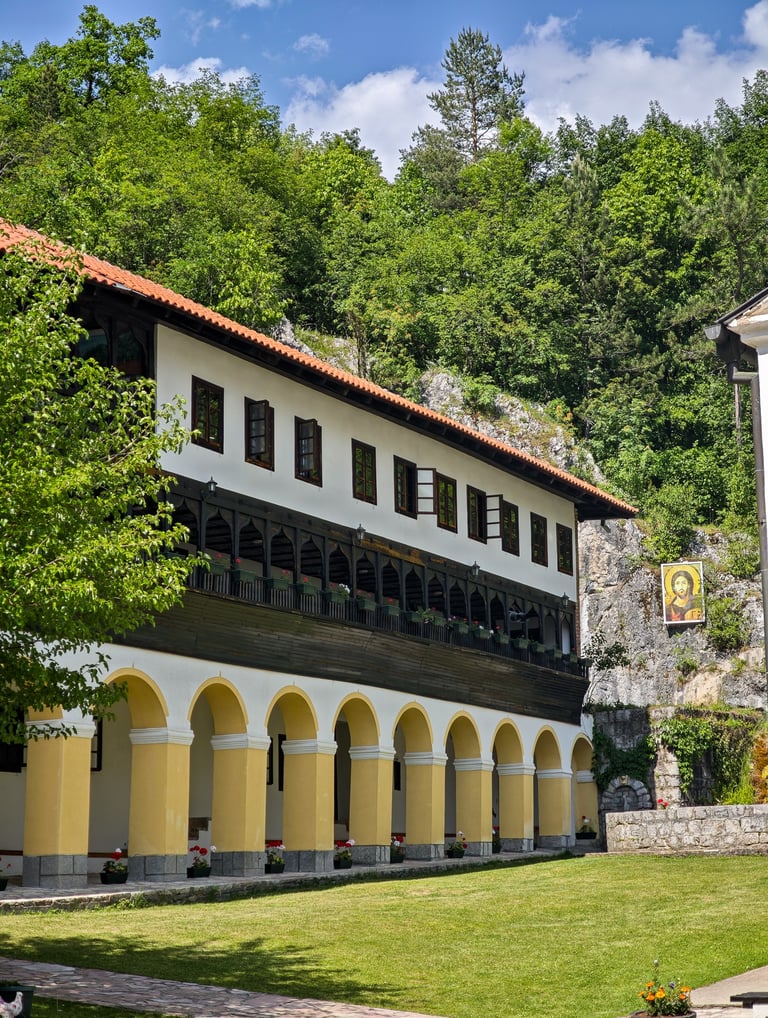

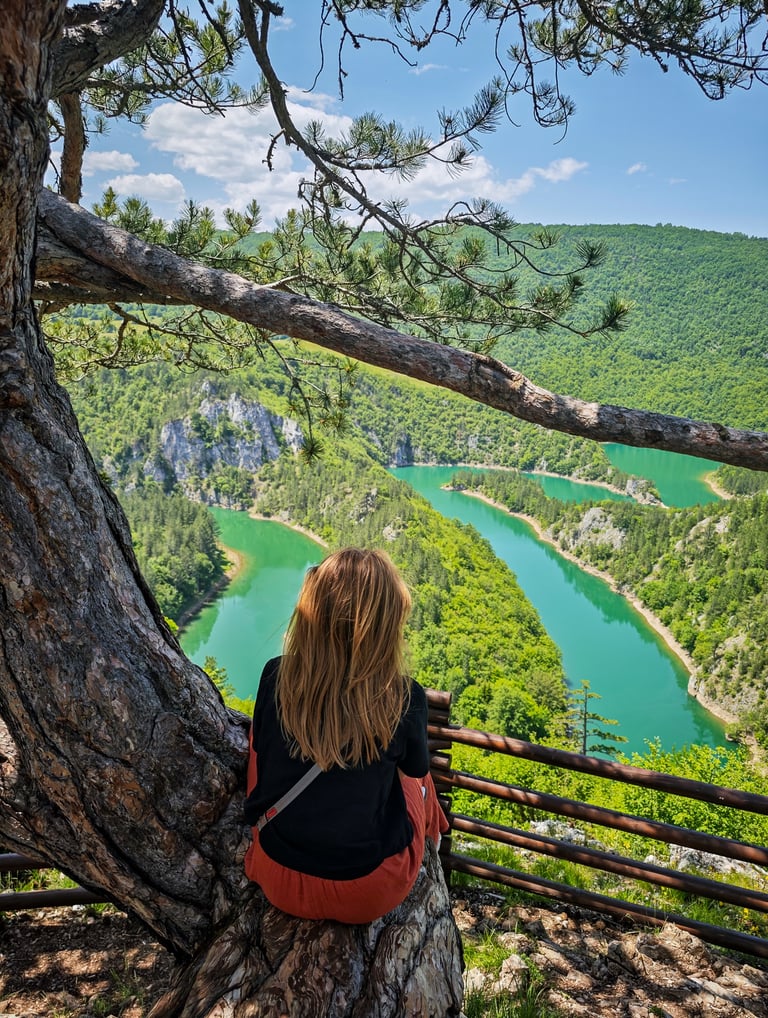

Biogradska Gora National Park
Biogradska Gora National Park is located in northeastern Montenegro, between Kolašin and Mojkovac. It’s one of Europe’s last remaining primaeval forests and the smallest of Montenegro’s national parks, but what it lacks in size, it makes up for in lushness and serenity. Biogradska Gora is known for its biodiversity. The forest is a mix of beech, fir, and maple trees, some over 400 years old, and is home to various bird species, deer, and even the occasional brown bear, though sightings are rare.
The heart of the park is Biogradsko Lake, a glacier lake surrounded by dense forest and easily accessible by car. From the parking area, it’s just a short walk to the water’s edge, where you’ll find wooden benches, picnic areas, and rowboats available for rent in summer. The 3.5 km loop trail around the lake is flat and shaded, perfect for an easy walk. Along the way, you’ll pass mossy trees, wooden bridges, and quiet inlets where the reflections on the water are almost mirror-like.
For those wanting to explore further, the park offers several hiking trails that lead deeper into the forest and up to scenic viewpoints. A popular trail is the one leading to Bendovac, which offers stunning panoramic views over the lake and surrounding peaks. Another beautiful spot nearby is Pešića Jezero, a smaller alpine lake you can reach after taking the ski lift from Kolašin 1600 Ski Center. It’s a peaceful place surrounded by mountain meadows. The issue with Biogradska park in comparison to Durmitor is that it is very difficult to explore with a regular vehicle, as the roads are unpaved and narrow. It is therefore best to go on a 4x4 tour through the park.
The nearby town of Kolašin serves as the main base for visiting the park. It’s a small mountain town with guesthouses, restaurants, and a laid-back feel. From here, it’s an easy 20-minute drive to the lake, and the road itself winds through beautiful scenery. Definitely enjoy a meal at Sherpas which offers a more luxurious yet affordable dining experience, or go for a very local dining experience at Savardak or Viline Vode. For a very special traditional experience, we can suggest staying at an Eco Village in a so-called Katun, a traditional summer pasture used by local shepherds. Make sure to check with the hosts how you can reach them or if they can organise a pick-up because they can be quite remote.
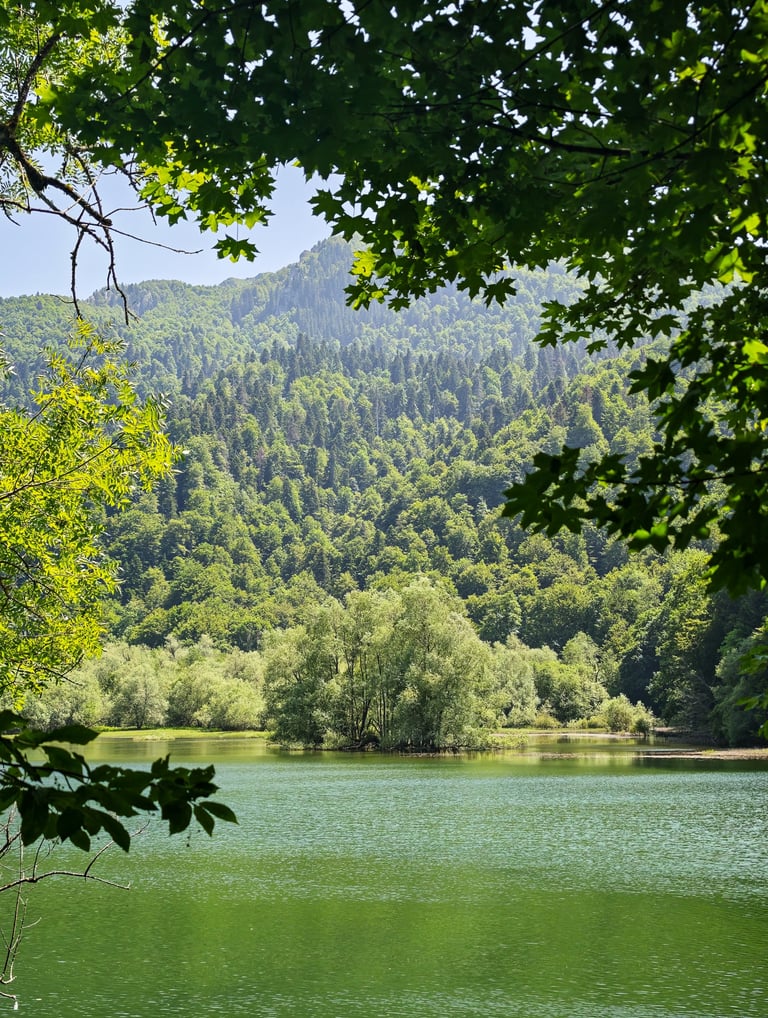

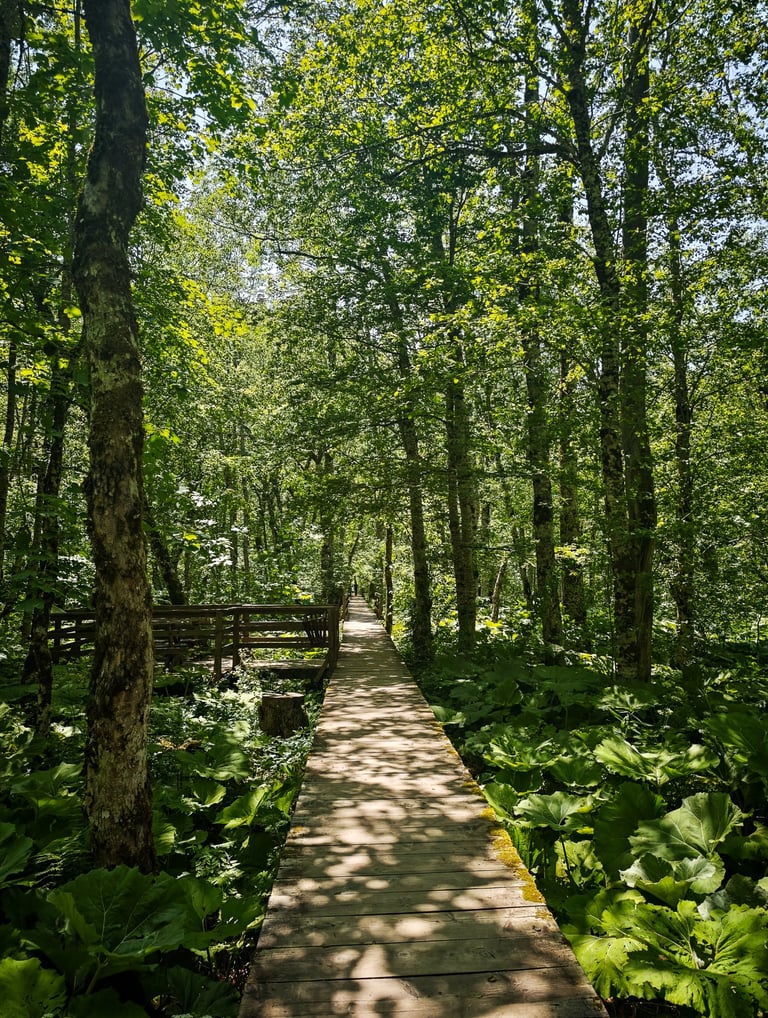

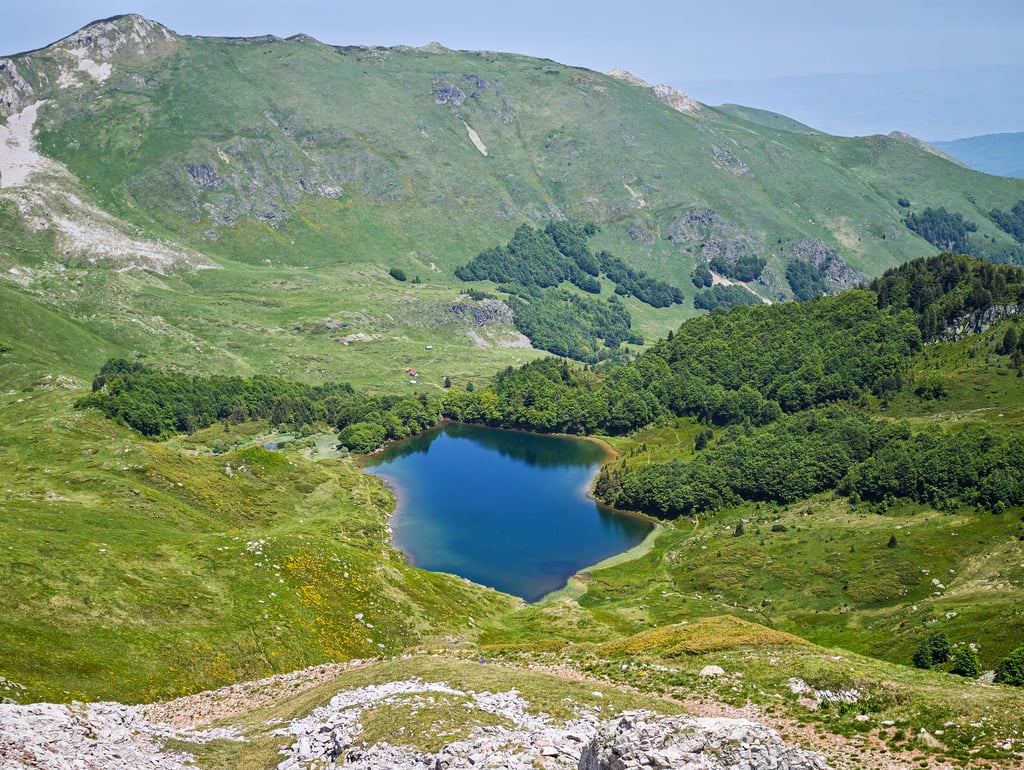

Podgorica
Podgorica is Montenegro’s capital and largest city, situated at the meeting point of the aqua-coloured Morača and Ribnica rivers. It’s often seen as more of a practical stop than a tourist hotspot, but the city offers a mix of modern life, a bit of history, and green spaces worth exploring. If you search for it, there are definitely some hidden gems to be found.
One of the most monumental buildings is the stunning Orthodox Temple of Christ's Resurrection. If you want some green space, Gorica Park and Kraljev Park are popular spots for locals to relax. A lovely place in Gorica Park is Klub Bocara, which has a very laid-back vibe and is a great place to escape the summer heat. Near Kraljev Park, you’ll find an almost literal hidden gem, as the amazing Itaka Library Bar sits underneath a viaduct. We were generally surprised by how many great restaurants and bars can be found in Podgorica and we would predict that in a couple of years from now, what it lacks in terms of tourism sights will be outbalanced by what it has to offer in urban vibes.
In case you venture a bit out of town, you can find the Ancient Doclea Ruins, which is a Roman archaeological site, at the edge. It is not that spectacular, but in case you are a UNESCO site collector or a history nerd, it's worth a quick stop. This way, you can also see more of the stunning river and have a chill riverside meal at one of the restaurants, such as Restoran Stefan or Restoran Vagan.
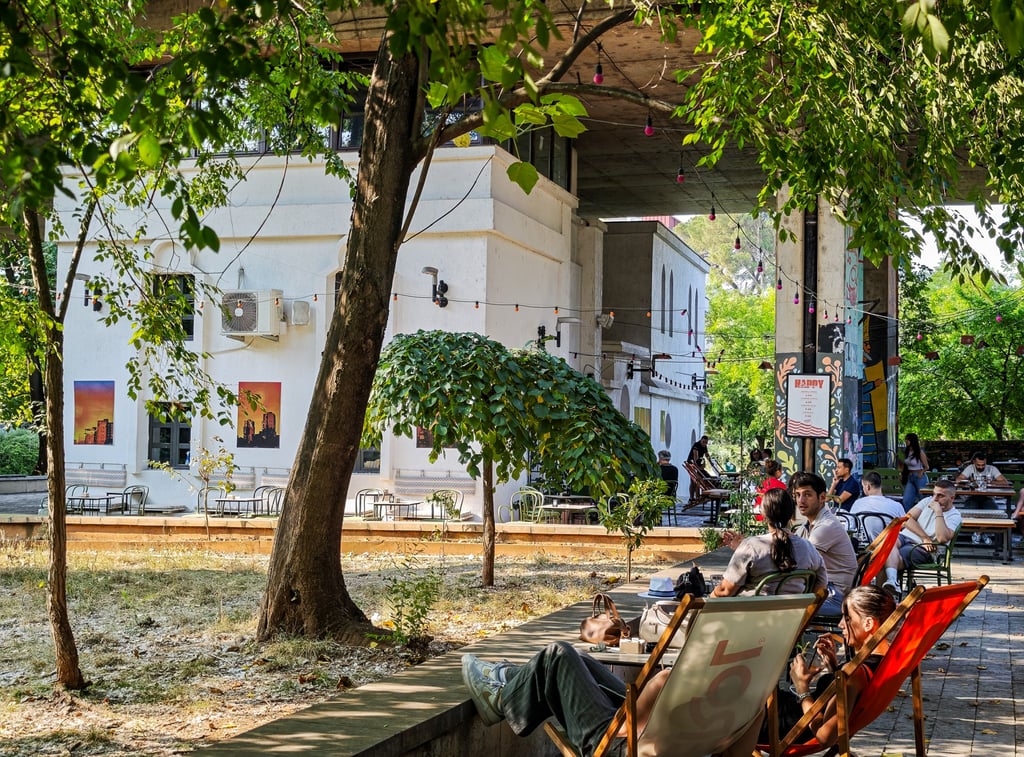

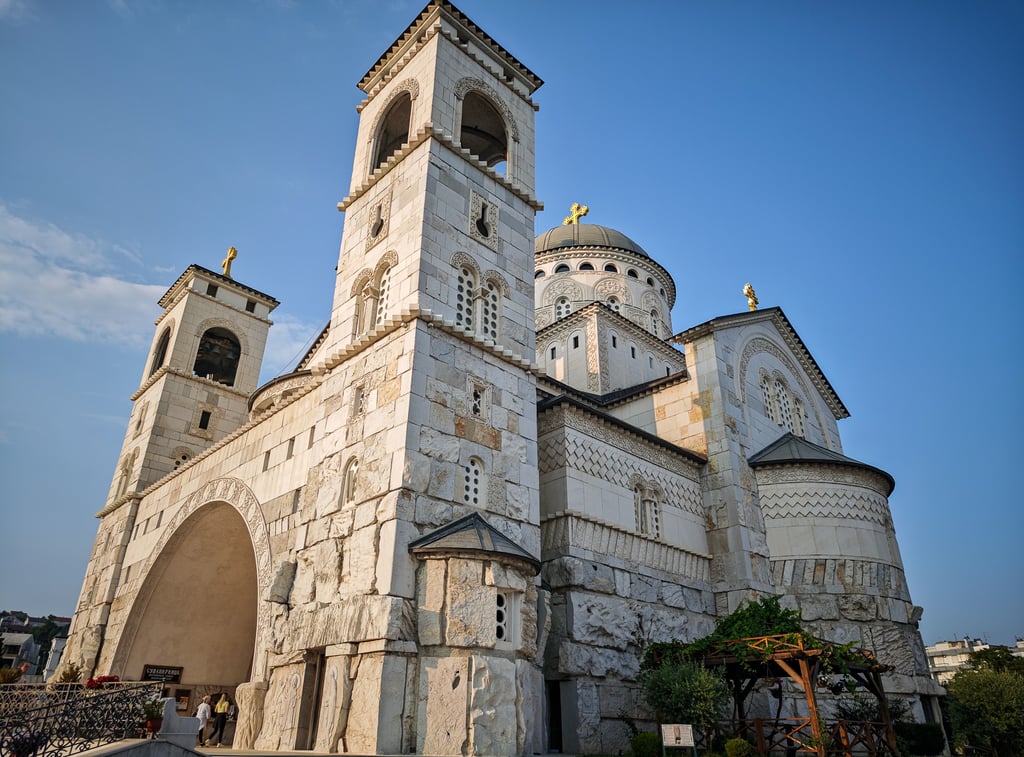

Skadar Lake
Skadar Lake is Montenegro’s largest lake and one of the most impressive natural landmarks in the region. Straddling the border between Montenegro and Albania, the lake is a vast wetland area famous for its rich birdlife, stunning landscapes and peaceful atmosphere.
When driving from Podgorica, you can start exploring the lake in the nearby village of Karuč, a small lakeside settlement with only a handful of houses and a few restaurants. The road there already offers the most amazing scenic views of the lake. On the west side of the lake, it looks much more like a winding river, with big patches of lilies that create meandering waterways, bordered by lush mountains. It truly looks like a great painting and almost made us feel like we were in Laos or Vietnam. When standing on the dock, someone from the Karučki krš restaurant can pick you up by boat if you like, from where you can enjoy the lake even better.
Next, continue to Rijeka Crnojevića, which is slightly bigger and better known. Along the way you’ll pass by the Pavlova Strana viewpoint, which without a doubt offers the most spectacular sight of Skadar. The town itself stretches along the river, with a few stone buildings, a couple of restaurants, and a pretty old bridge. It’s a nice place for a slow walk and a coffee, but it is also the best place from which to go on a boat tour, as the lake is the most dramatic on this side. We went on a tour from Virpazar, just like most people who visit Skadar, but the lake is much more open and wide here, which can make the tour rather boring.
Virpazar is kind of the capital of the lake. It’s more tourist-oriented than the other villages, with a small market and several restaurants. It can be a good place to search for accommodation, due to its convenient location.
The region surrounding the lake is also known for its amazing wineries. We visited two completely different ones. The Monte Grande Winery has only been open for a couple of years and is located north of the lake, near Podgorica. When you visit it, you can enjoy their premium wines, which they only serve at the winery, paired with amazing little bites. The winery and its surroundings are very picturesque, and the people who work there are very kind. It’s best to book beforehand through Instagram.
The latter is also the case for Winery Tradicija, which is almost the polar opposite of Monte Grande in the sense that it is one of the oldest wineries and is much more traditional, as the name hints. Aided by a translating device, the owner will tell you all about what they produce, from wines to fruit liquors and all types of vegetables and meats. Here you can also do a tasting accompanied by the most amazing bites from their land. A visit to a winery is a must-do when in this part of Montenegro.
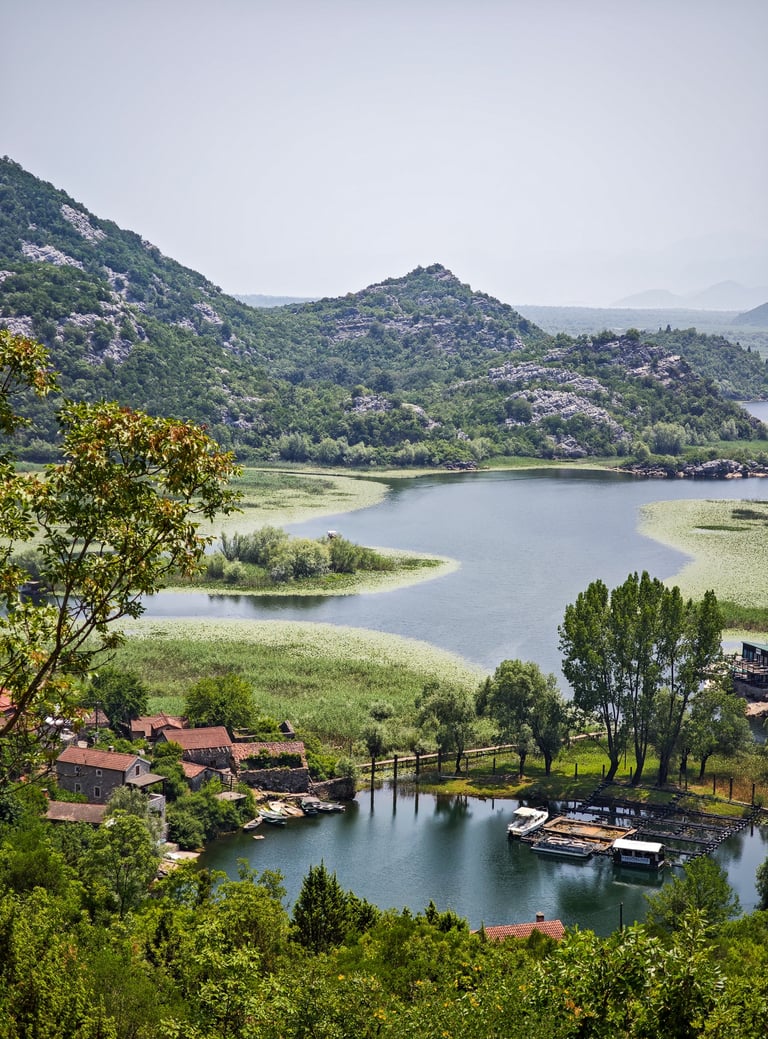

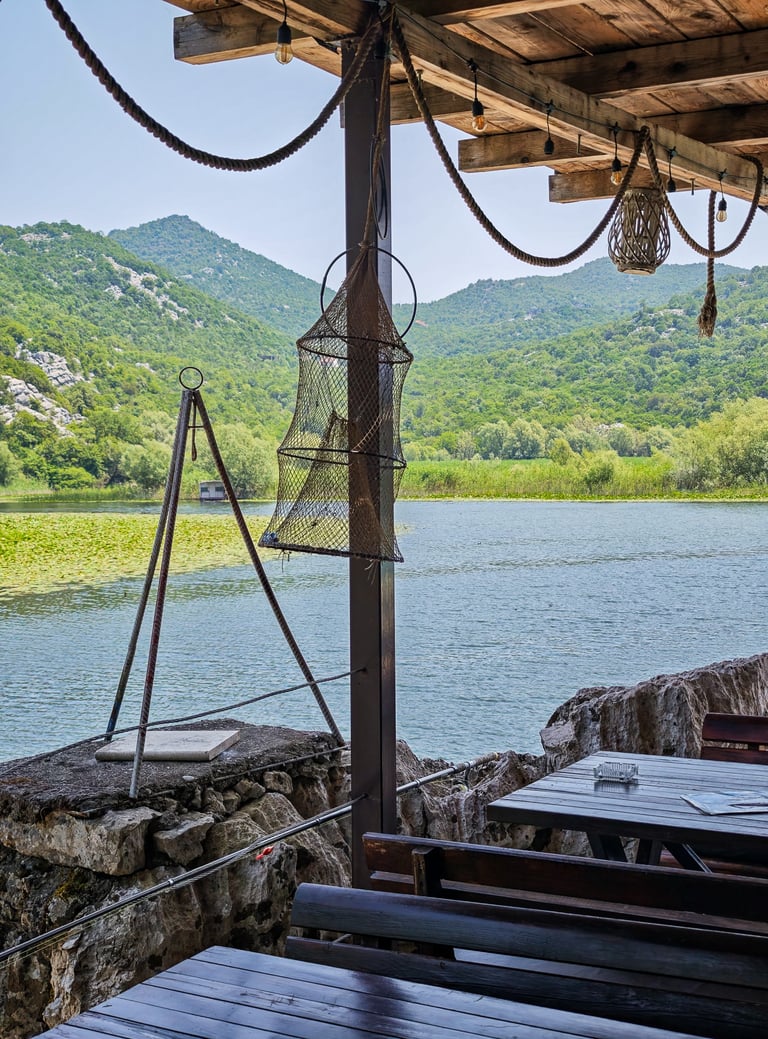

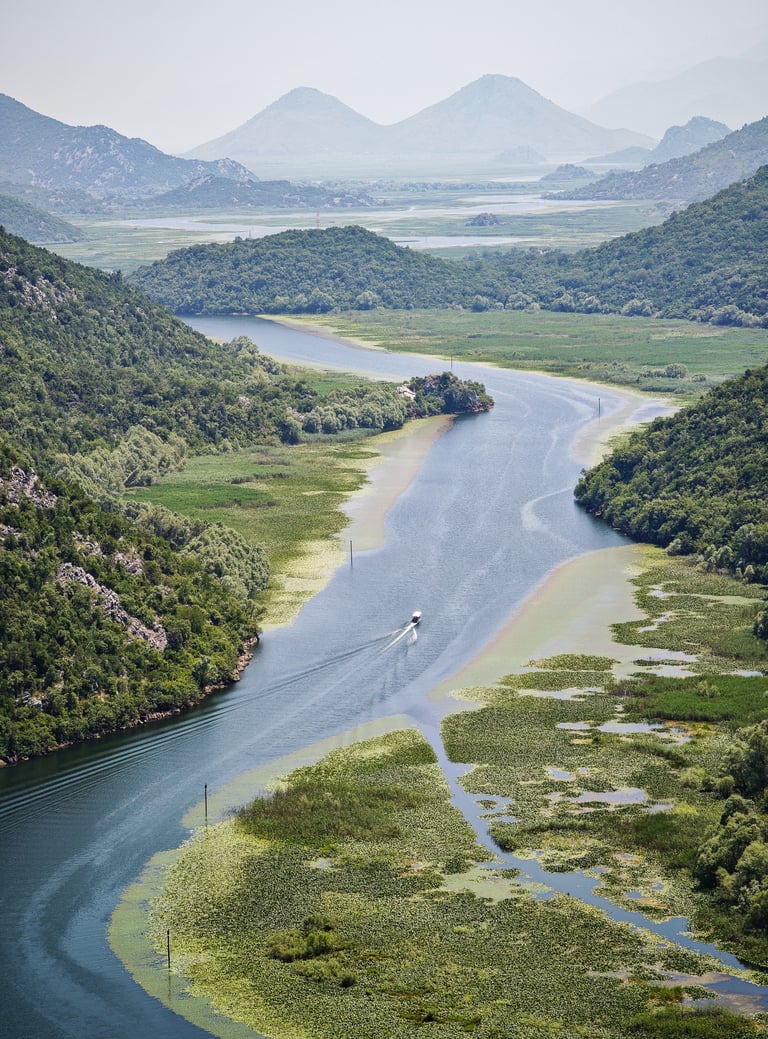

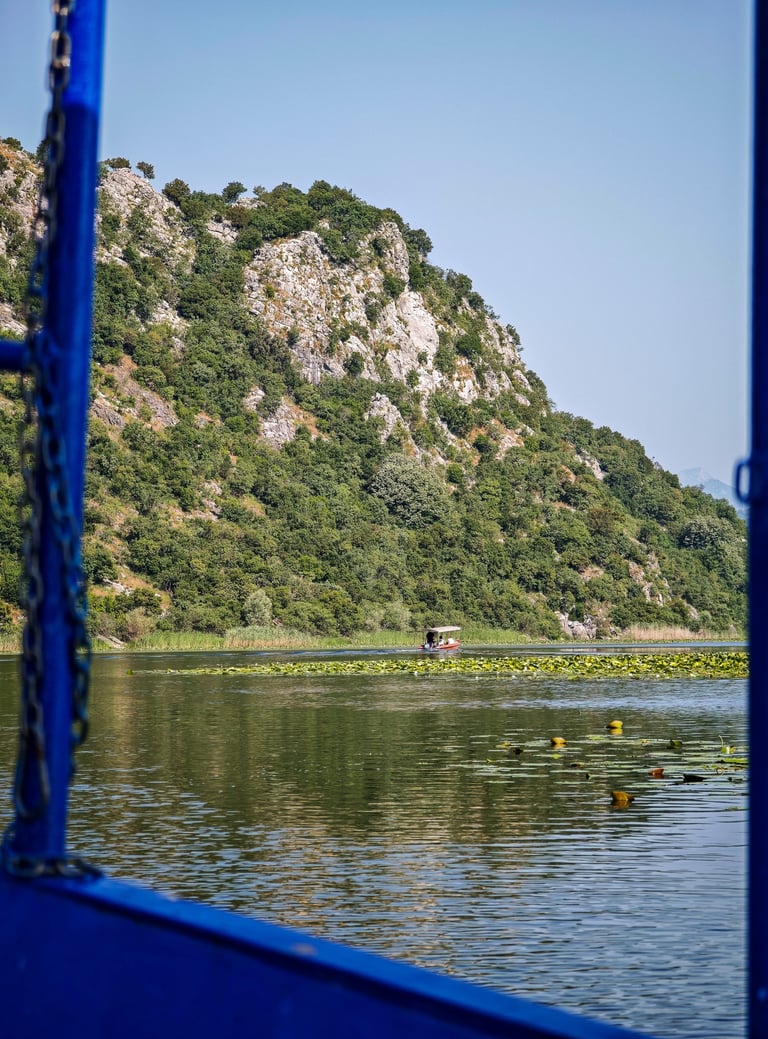


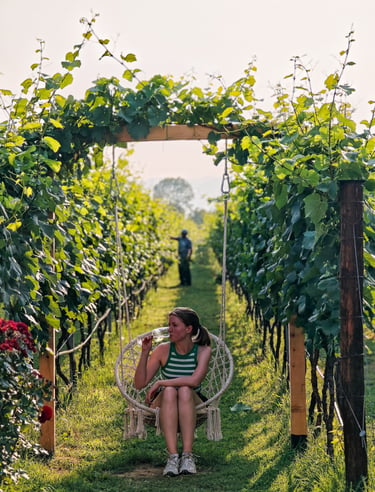
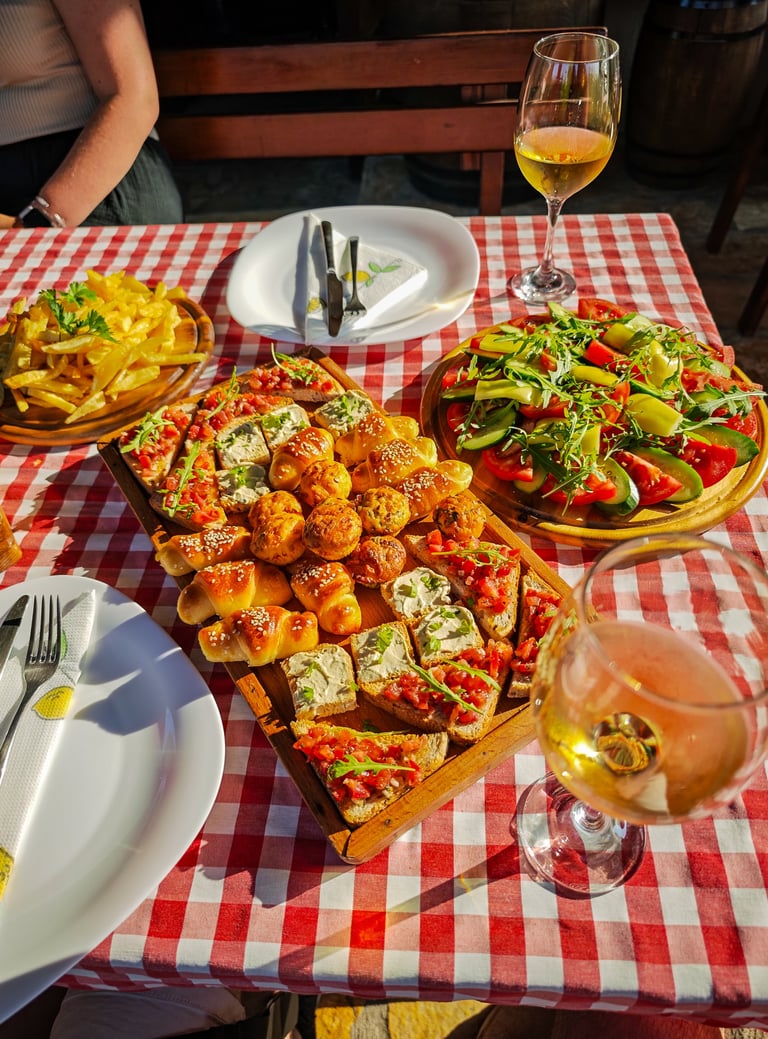

Hopping along the coast
Now you’ve explored the bay, the mountains, the capital and the lakes, it’s time to hop along the beautiful coast of Montenegro with its many picturesque towns, coves and beaches.
Ulcinj
Ulcinj sits on Montenegro’s southern coast, close to the Albanian border. It’s known for its laid-back vibe, diverse culture, and one of the longest beaches on the Adriatic – the famous Long Beach (Velika Plaža), a sandy coastline that runs for about 13 kilometres. It’s one of the longest beaches in the region, popular with families, windsurfers, and anyone looking for space to relax. The shallow, calm waters make it ideal for swimming. Along the beach, you’ll find beach bars, restaurants, and rental spots for water sports equipment.
The town itself has an old centre with narrow streets and a mix of architectural influences reflecting its rich history. You’ll find mosques and churches alongside old city walls, cafés, and seafood restaurants. Ulcinj’s Old Town is smaller and quieter compared to Kotor or Herceg Novi but worth a stroll to soak in the atmosphere. Restaurant Dulcinea 1984 offers one of the best views of the bay of Ulcinj and is a great place to escape the summer heat with its vine-covered terrace.
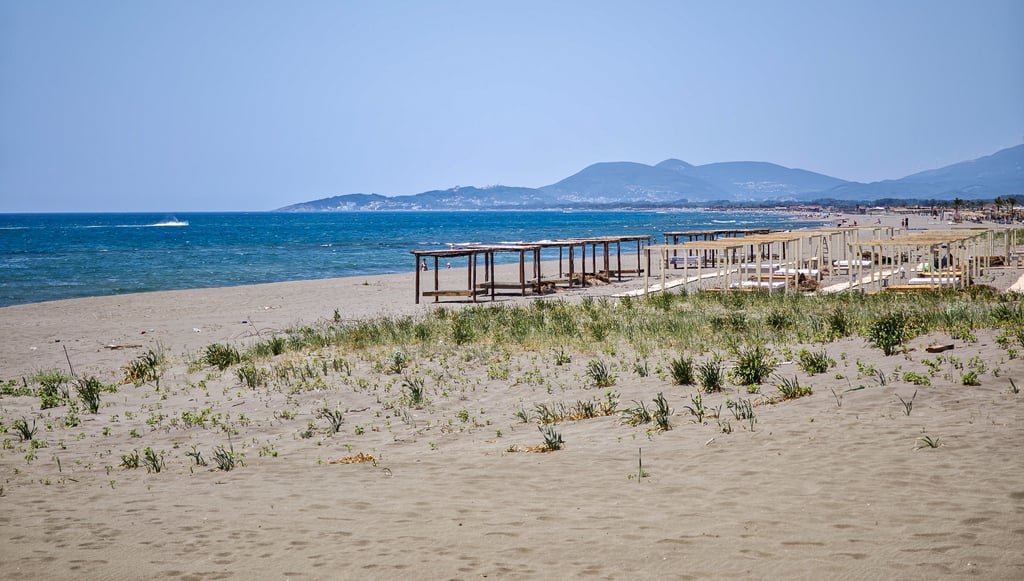

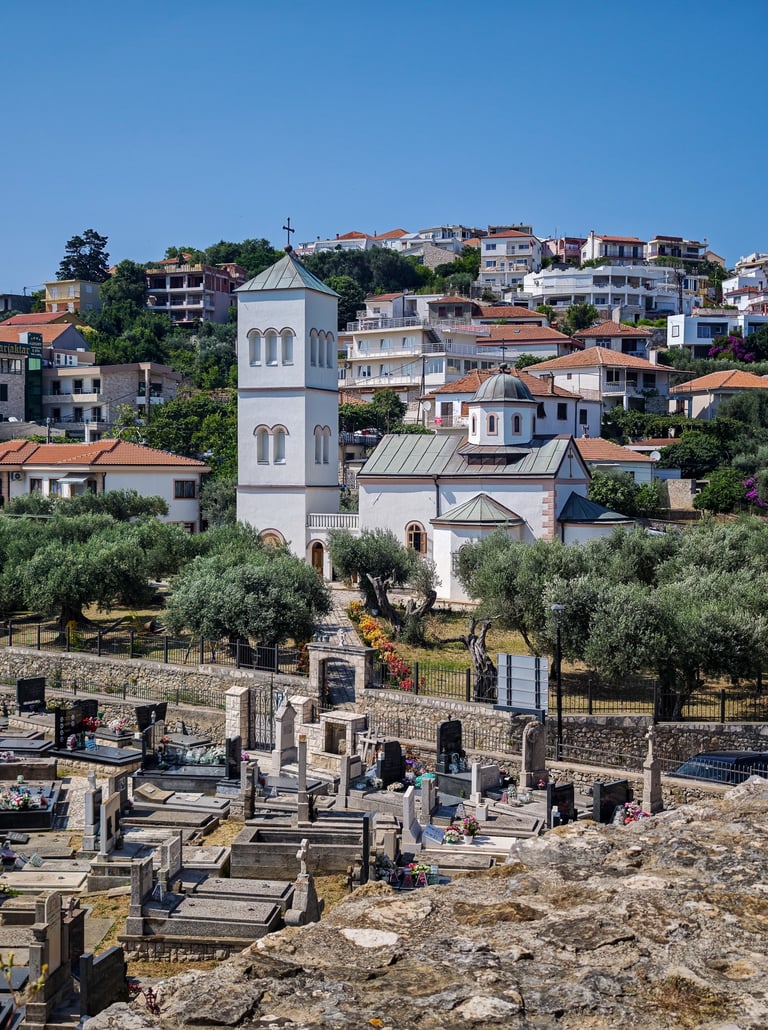

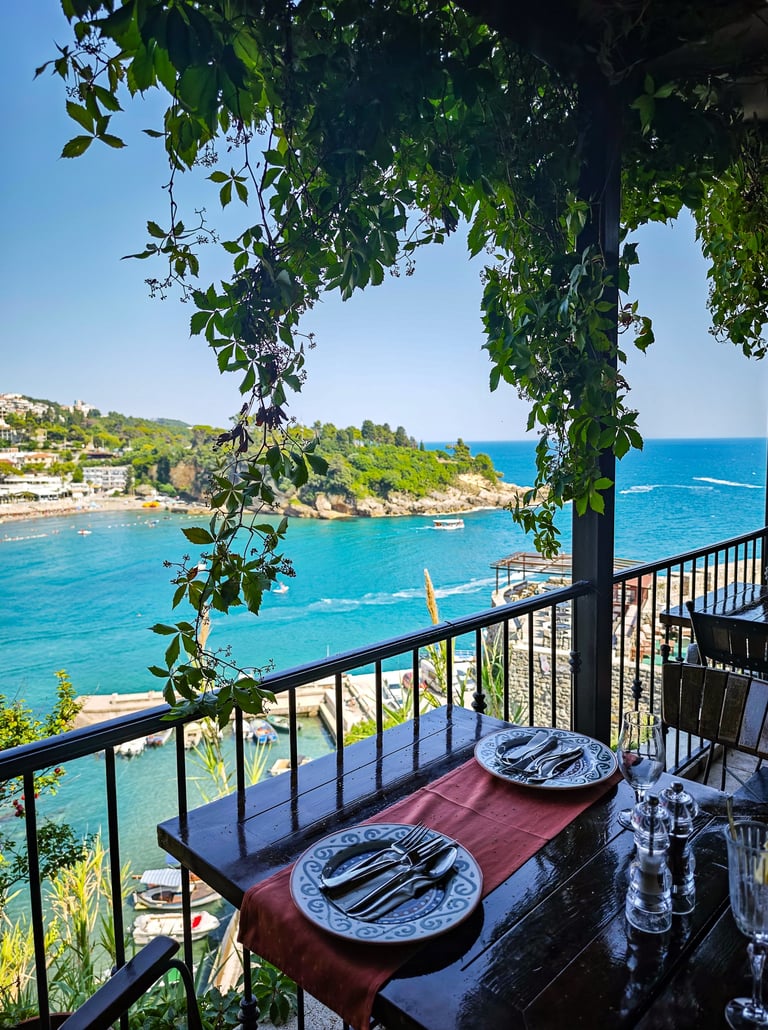

Stari Bar
Stari Bar, or Old Bar, is one of Montenegro’s most fascinating historical sites, located a few kilometres inland from the modern town of Bar. This ancient fortified town sits on a rocky hill, surrounded by impressive medieval walls that have stood through centuries of change and conflict. It was definitely the highlight of our trip along the coast, both as a historic and beautiful sight, as well as an incredibly cosy town.
Walking through Stari Bar, and more specifically its open-air museum, feels like stepping back in time. Though much of the town is in ruins, you can still explore narrow stone streets, old churches, mosques, and fountains that tell stories of its diverse past. Key sights include the remains of the aqueduct, which once brought water from the nearby hills, the clock tower, standing tall amidst the ruins, and the fortress, which gives sweeping panoramas over the surrounding countryside, olive groves, and the distant Adriatic Sea. The site reflects a blend of influences – Roman, Byzantine, Ottoman – making it a unique patchwork of history.
We experienced Stari Bar to be such a lovely place due to its cosy streets and plenty of amazing restaurants and cafés, so we can suggest using it as your base for exploring this part of the coast. We especially enjoyed Restoran Kaldrma and Konoba Bedem. Stari Bar is also known for the homemade pomegranate wine and beers, which are just incredibly delicious.
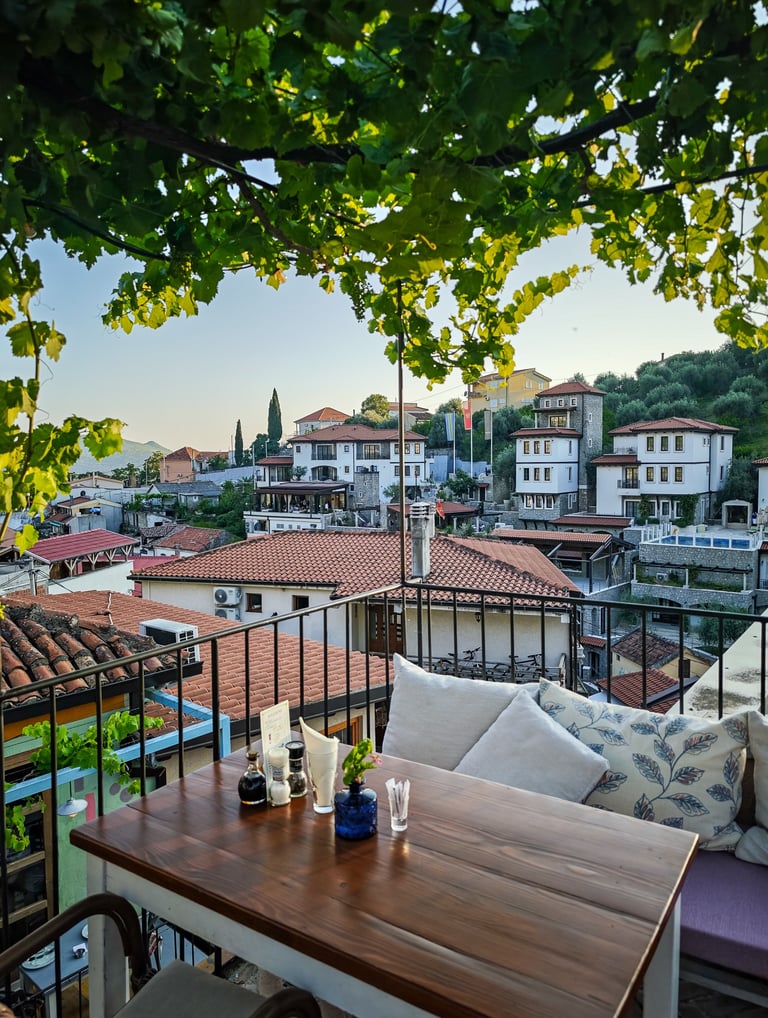

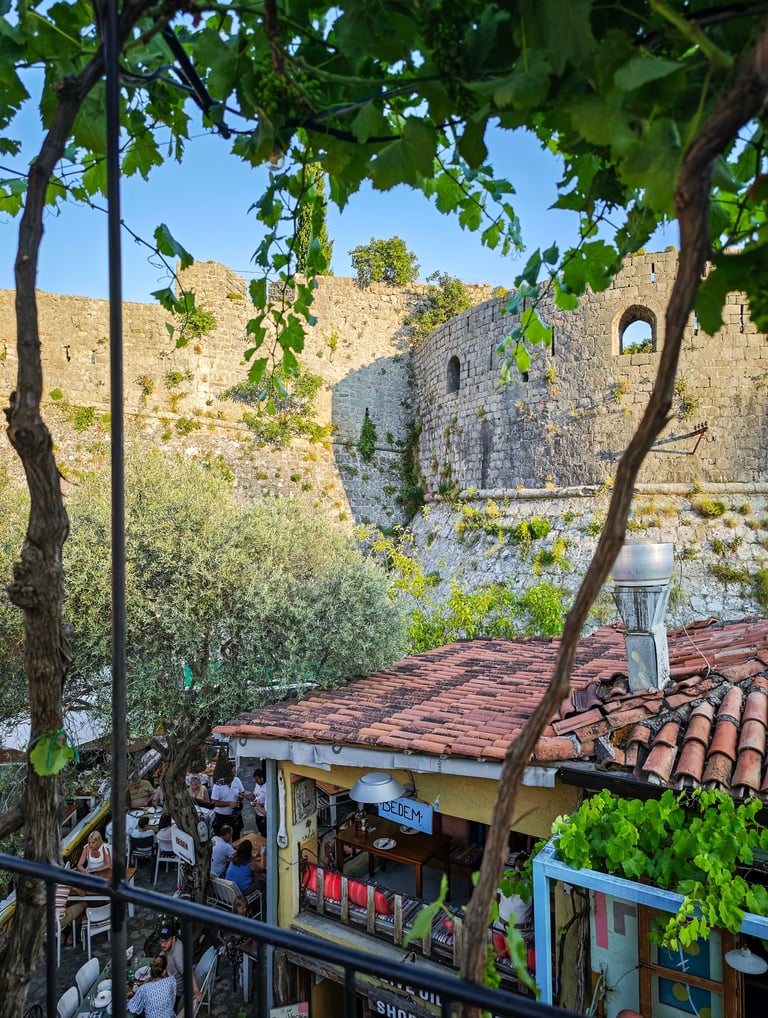

Petrovac & Sveti Stefan
Petrovac is a small coastal town located about halfway between Budva and Bar. It’s known for its relaxed atmosphere and lovely sandy beaches. The town’s waterfront is lined with cafés, restaurants, and a small marina, creating a pleasant place to stroll in the evenings. Nearby, the rocky headland with the Castello Fortress offers a short climb and some nice views back over the bay and town. The old fortress dates back to the 16th century and adds a touch of history to the seaside setting. If the heat allows for it, you can walk to Fenix Beach, Beach Lučice, and even the Buljarica Beach and/or viewpoint. All these routes are incredibly scenic.
Just a few kilometers from Petrovac is Sveti Stefan, one of Montenegro’s most famous landmarks. This tiny islet connected to the mainland by a narrow causeway is home to a luxury resort and private houses, but also a striking sight from afar, which is how you would experience it as it is not possible for non-guests and residents to visit it. With its terracotta rooftops, stone walls, and historic buildings, Sveti Stefan looks like a miniature medieval village perched on the sea. Definitely walk up to Pešačka staza Milocer which is a lovely cliff side park from where you have the best view of Sveti Stefan and the stunning Milocer Beach and Villa.
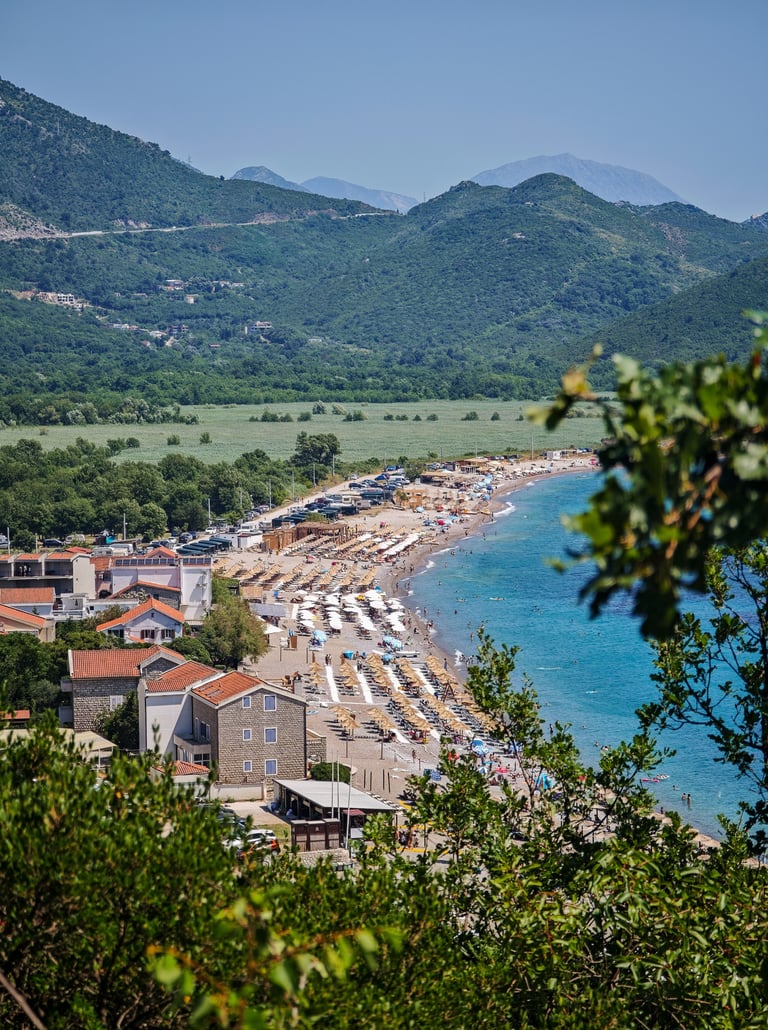

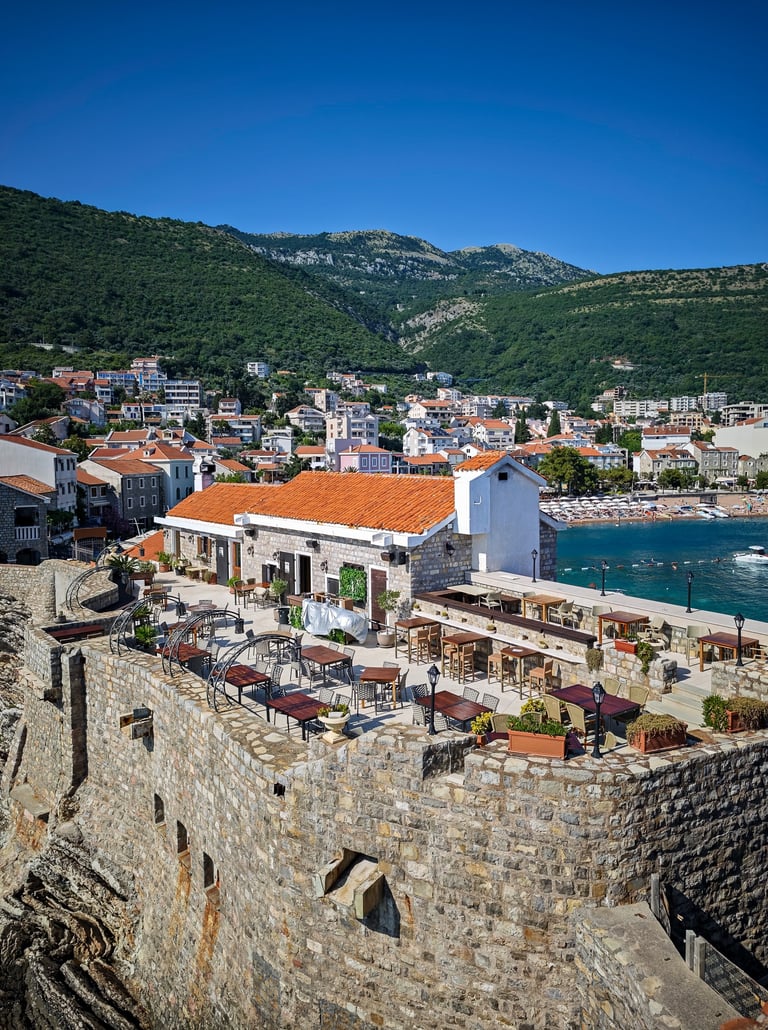

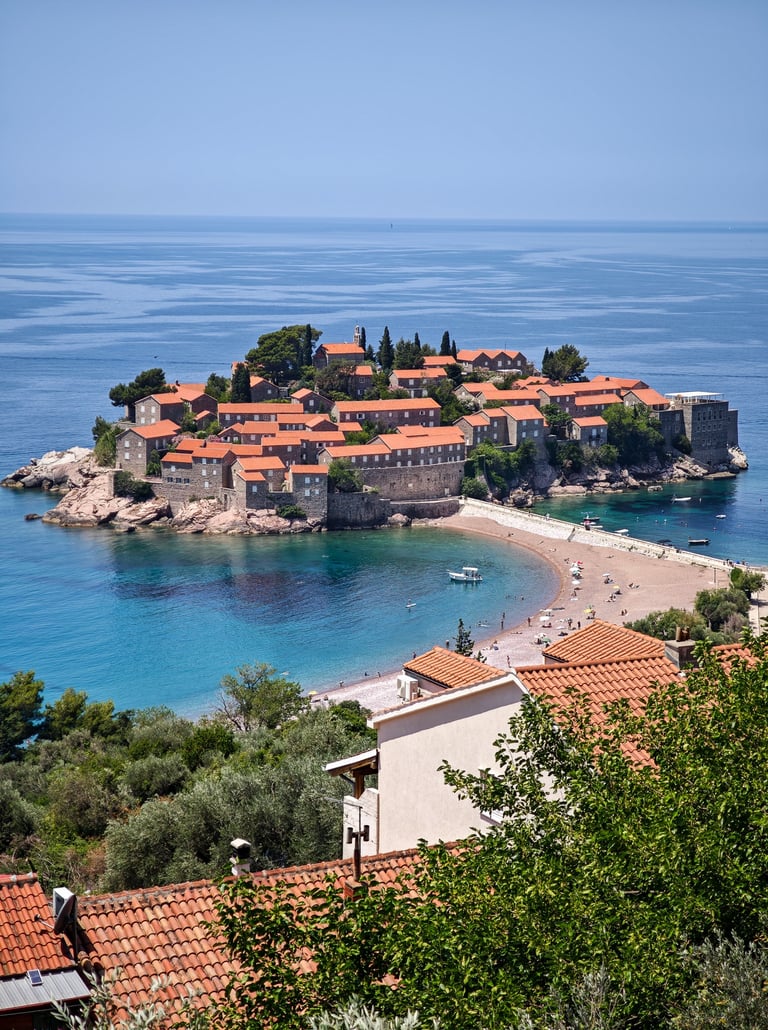

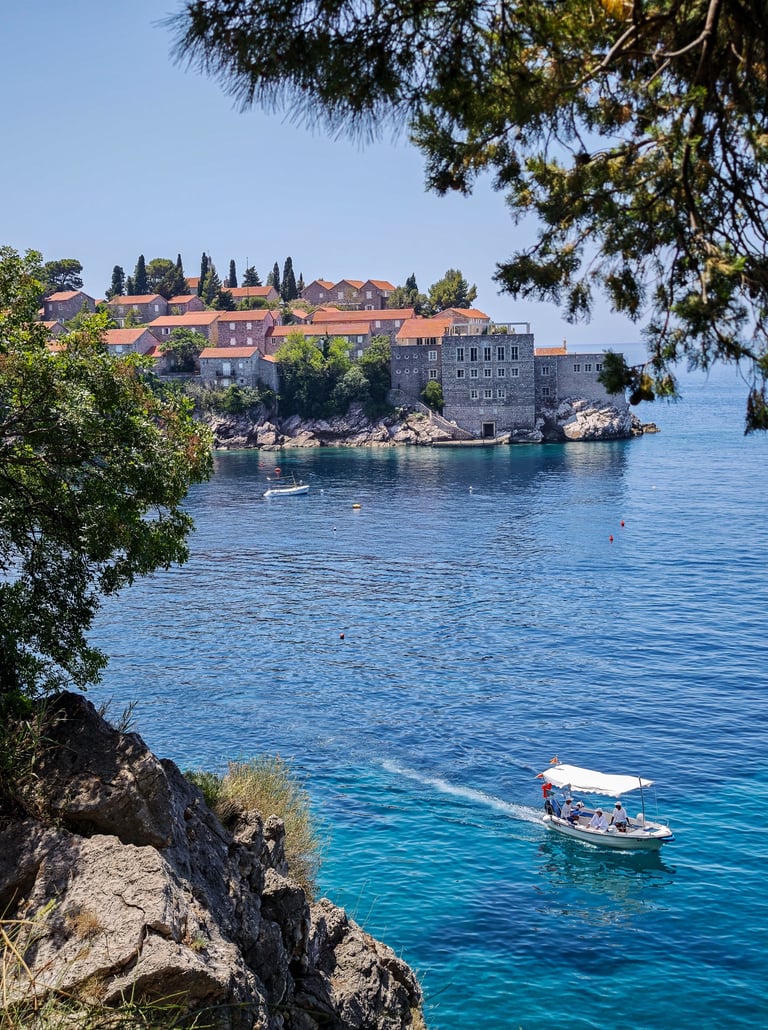

Budva
Budva is Montenegro’s most popular seaside town, known for its vibrant atmosphere, historic old town, and lively beaches. It’s especially attractive for tourists who are wishing to enjoy nightlife and beach time, although we definitely think that there are better beaches elsewhere, in case you’re looking for more natural beauty and calmness. In case you are looking for a quieter beach experience, you can opt for Mogren Beach, which you can reach via a stunning seaside walk from the old town.
The old town is a maze of narrow streets, stone buildings, and small squares. Surrounded by medieval walls, it’s packed with cafés, bars, and shops, offering plenty of spots to relax or soak up the atmosphere. Key sights include the Citadel, which offers views over the town and sea, and several small churches that date back centuries. The Old Town feels lively during the day but really comes alive at night when locals and visitors gather for drinks and music.
Where most travellers opt for Budva as their base to explore the coast due to its liveliness and amount of amenities, we would actually say that it’s way too crowded, expensive and even a bit tacky. Though we found the old town definitely worth the visit, we would not suggest staying in Budva for more than an afternoon or night.
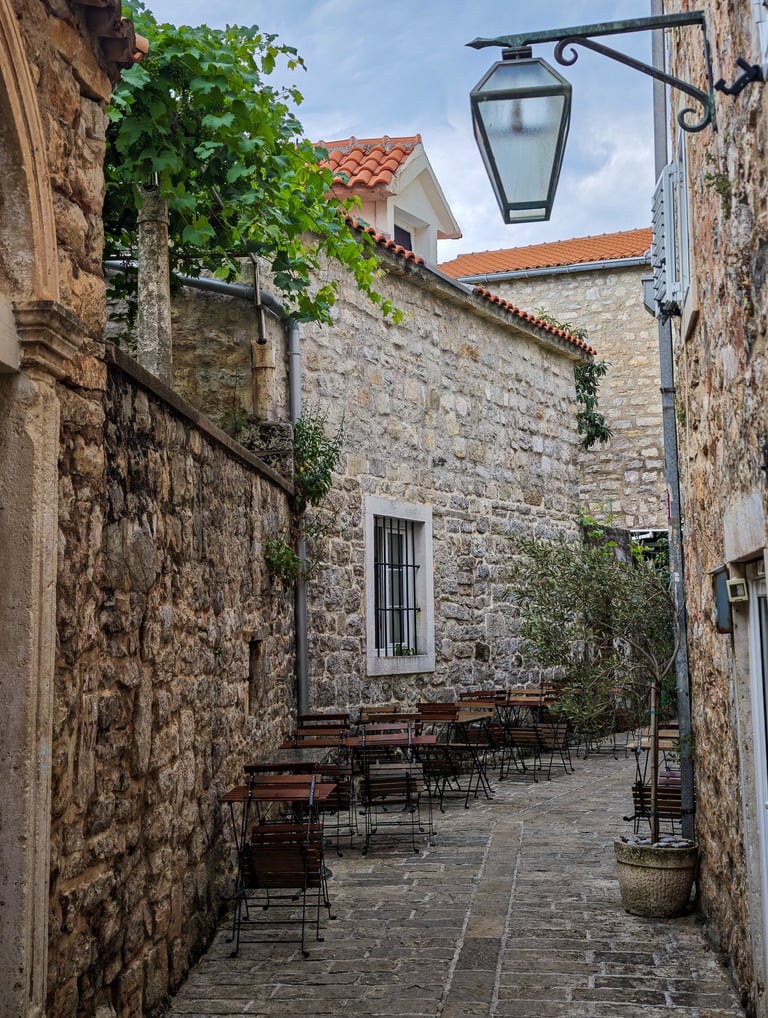

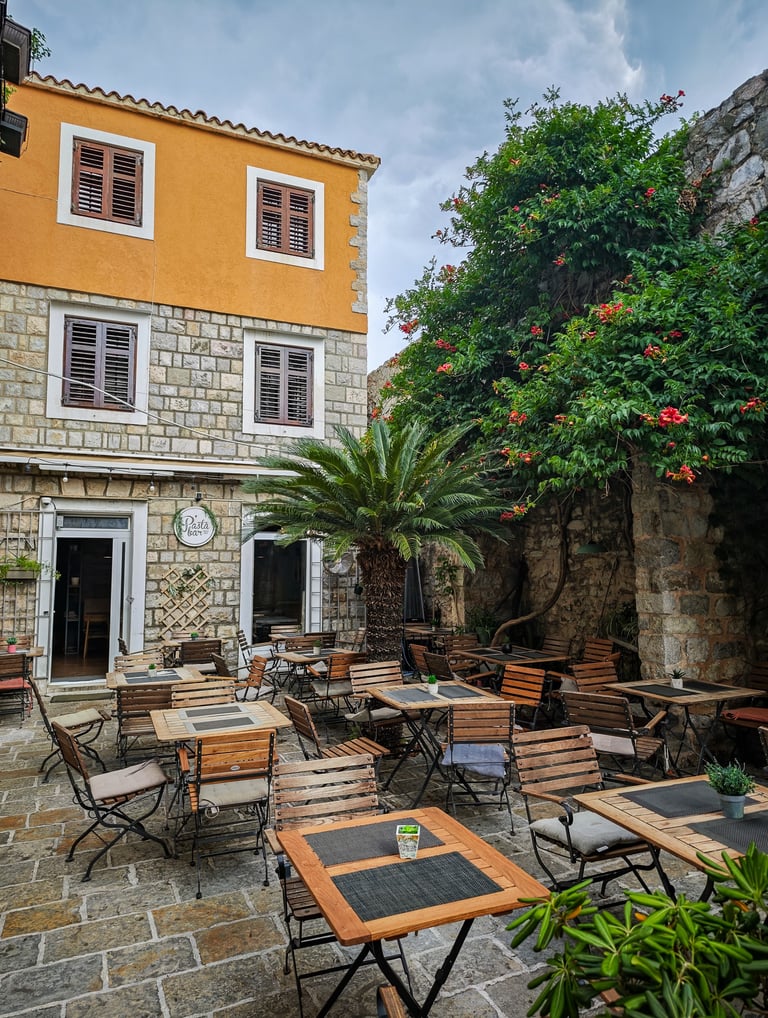

Cetinje and Lovćen National Park
Cetinje is Montenegro’s historic royal capital, located inland on a plateau surrounded by mountains. It has a quiet, small-town feel with a rich cultural heritage. The town is home to several important museums, old embassies, and religious sites, reflecting its past as the political and spiritual centre of Montenegro. Notable places include the Cetinje Monastery, the King Nikola Museum, and the former Royal Palace, which now houses the National Museum.
Walking around Cetinje gives a sense of the country’s history, but nowadays it’s mostly just an atmospheric little town with locals enjoying their spare time outside on a lovely summer evening. In case you’re still in for tasting some classic Montenegrin dishes, you will find plenty of great traditional restaurants here.
Just a short drive from Cetinje is Lovćen National Park, named after the mountain that dominates the landscape. It’s also known for its dense forests, rocky peaks, and peaceful trails, making it a great escape into nature after exploring the bay or coastal area. It’s also said that this mountain range is where the name Montenegro stems from, as the Venetians were in awe of the massive mountains that form the Bay of Kotor and therefore started referring to the place as Black Mountain.
The park is a popular spot for hiking and offers stunning views over Montenegro’s coast, countryside, and even the Bay of Kotor on clear days. At the summit sits the Mausoleum of Njegoš, dedicated to Montenegro’s most famous ruler and poet. The mausoleum is accessible by a steep climb from the road, and the panoramic views from the top are well worth the effort. There are also plenty of other marked trails throughout the park, which you can easily find through an app like Komoot.
We had an amazing stay on the edge of the park near Cetinje in a stunning tiny house called Albero Casa, which we can highly recommend. Moreover, Restaurant Nevjesta Jadrana at the top of the Bay of Kotor is an amazing place to have a meal after or before you defy the infamous Serpentine that connects the bay to Lovćen.
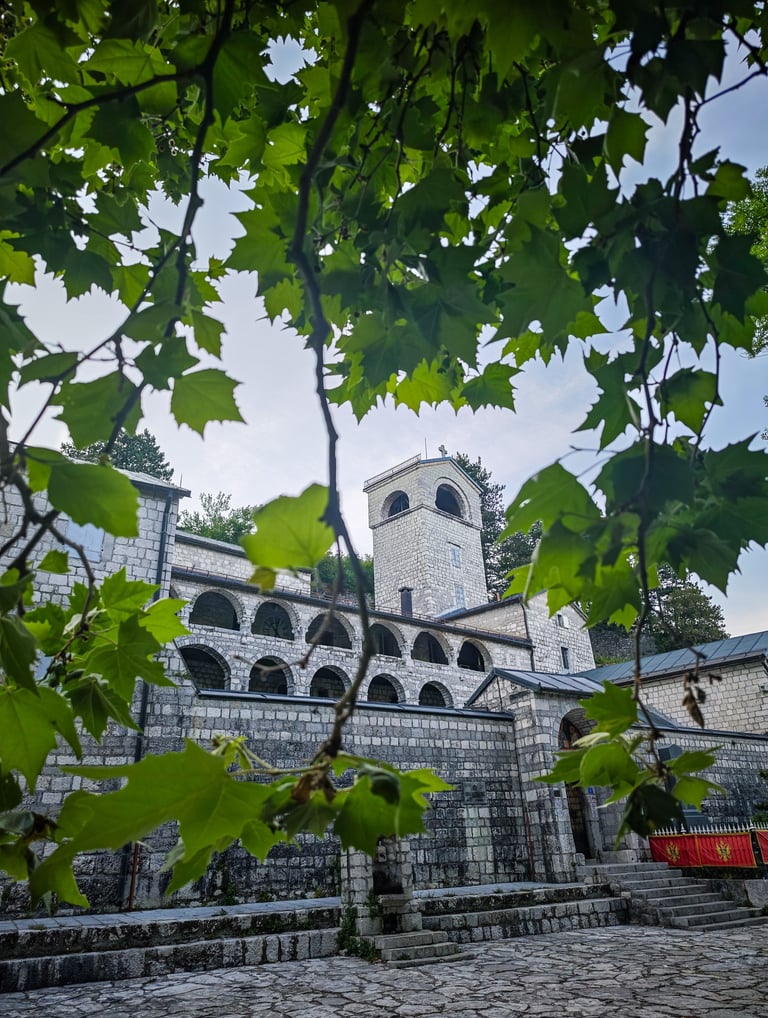

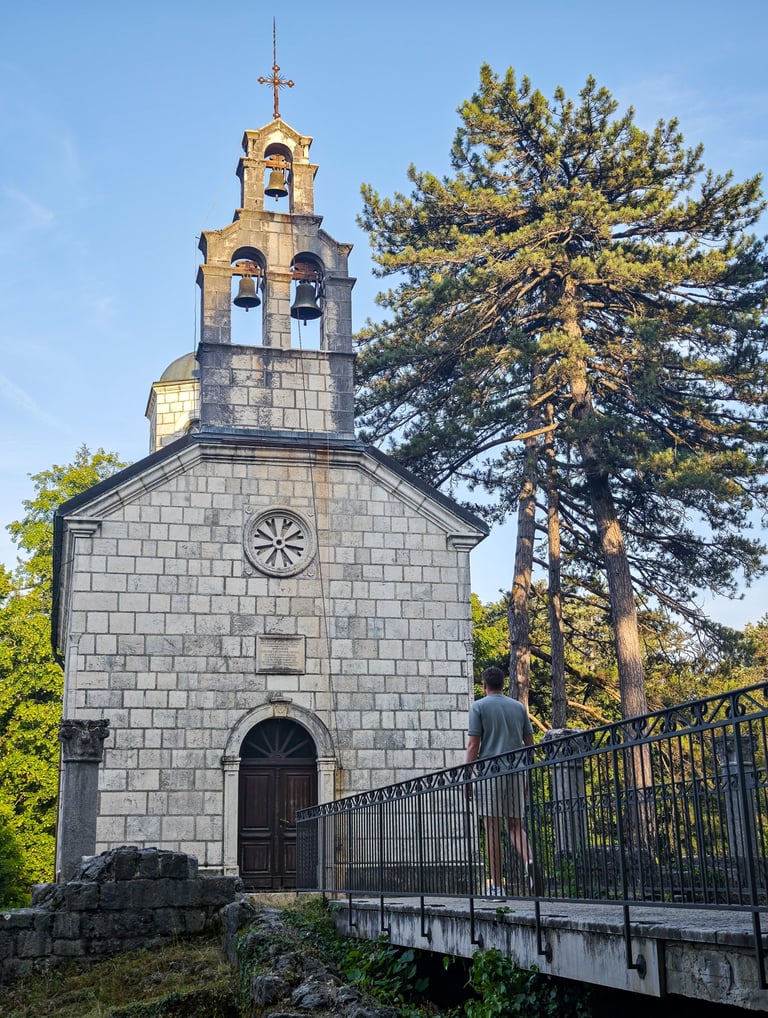

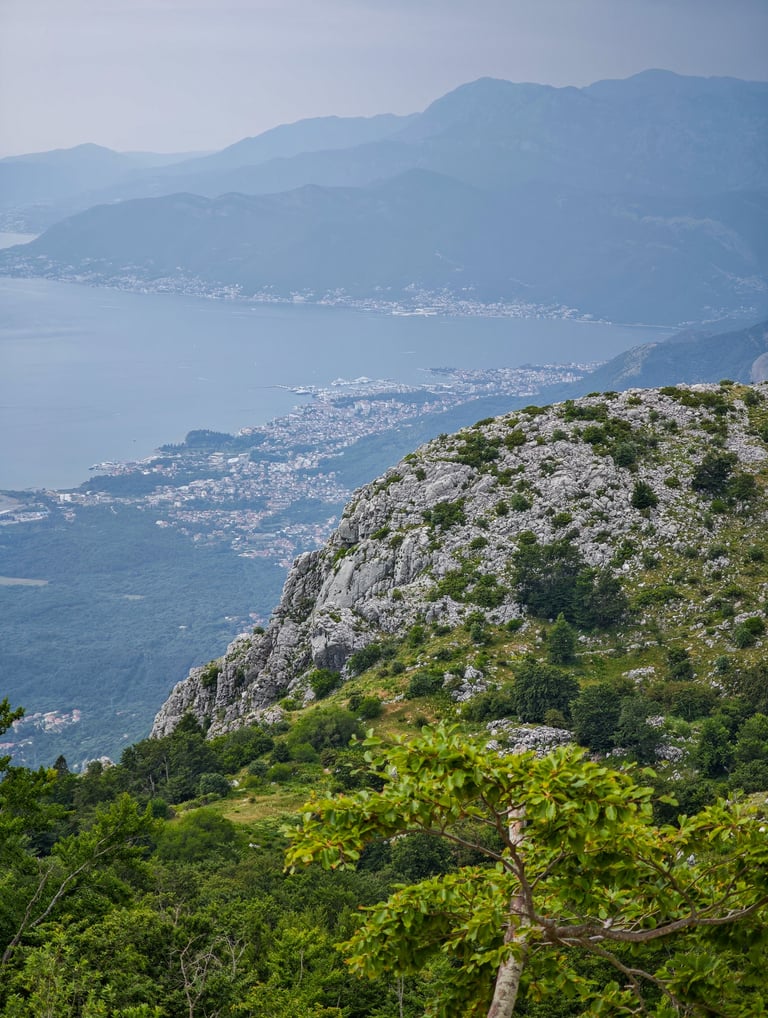

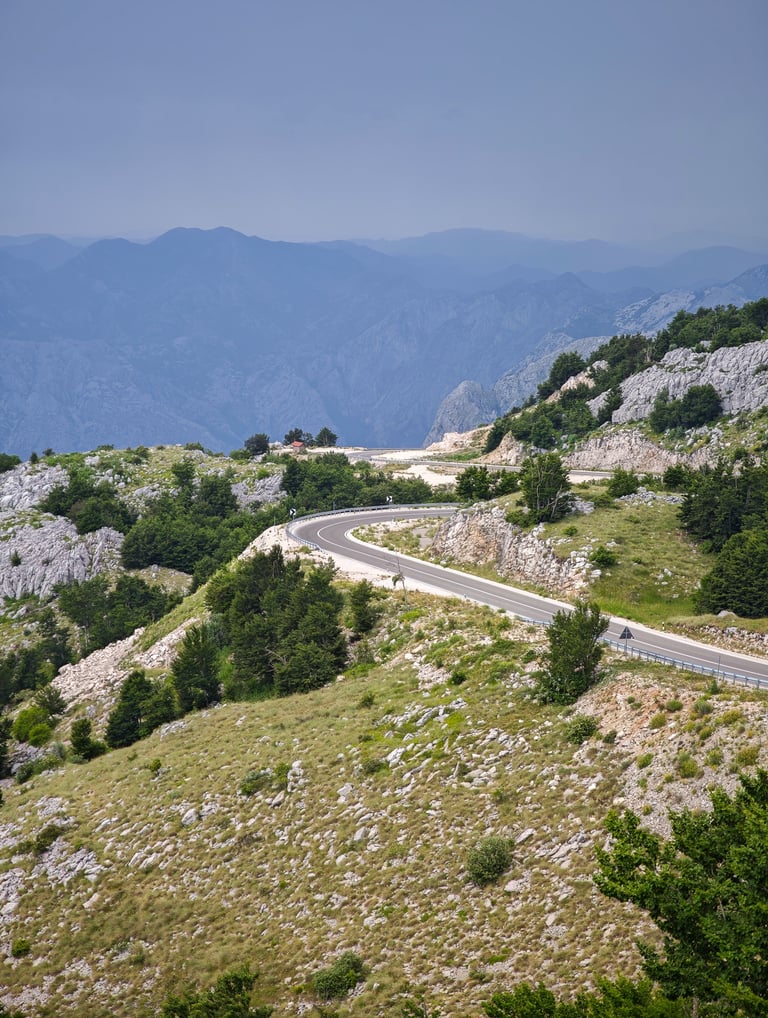

Good-to-knows
Montenegro is located in Europe but is not part of the European Union. EU citizens can access the country without a visa, but non-EU citizens need a specific visa for Montenegro.
The Euro is the currency used, and debit and credit cards are widely accepted, though tourism is still largely cash-based, so make sure to bring a generous amount with you. ATMs are widely available, but you do pay a standard fee of 5 euros per withdrawal.
As the coast and bay can get really crowded, it is best to visit these in May and September for good weather and fewer crowds. April and October are ideal for hiking and sightseeing, but be aware that some parts of Durmitor can be covered in snow.
The best way to get around is by car, as public transport is limited. We can highly recommend Sunny Cars, which is the most affordable and worry-free rental company in our experience. Be aware that the roads can be very narrow and winding, so make sure to drive a car of a size that you are comfortable with.
Tap water is generally safe to drink in most places. It is recommended to ask your local host for advice.
The official language is Montenegrin, but as Google Translate does not offer this language (offline), you can mostly use Serbian for communication.
There are a lot of road works in Montenegro, so Google Maps can be unreliable. It also often directs you to back roads that could actually be more like off-roading, so make sure to stick to the main roads (the dark grey lines in Google Maps with yellow numbers).
